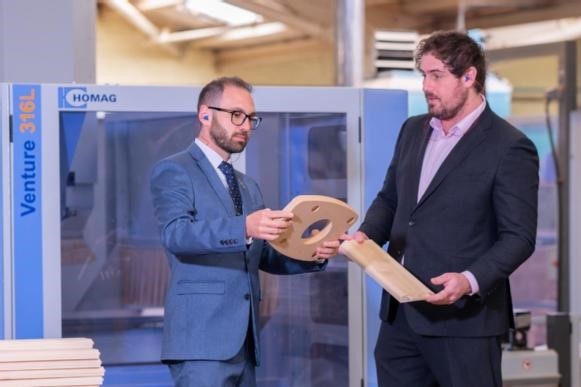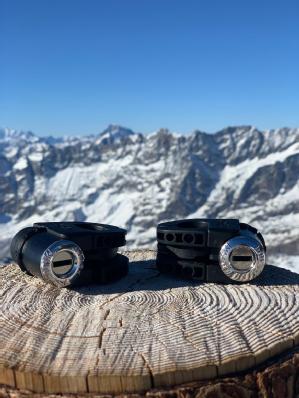Success Story Assetbank
Building a future-ready factory: Samuel Heath’s digital transformation journey
“Working in collaboration with Made Smarter and WMG meant we were dealing with people who really take the time to understand." Find out more about how WMG's SME Group helped manufacturer Samuel Heath to futureproof its factory.
Developing the next generation of manufacturing talent with Data Image Group
Data Image Group, a large-scale print production house based in the East Midlands, has been working with global brands for over forty years.
With a vision to become an industry leader in innovation, the company partnered with WMG to access funding, engage in knowledge exchange programmes, and collaborate with talented graduates, turning their ambition into action via internships.
Breaking the mould: Fixit Medical partners with WMG to deliver a safer, smarter medical device
Fixit Medical is transforming healthcare with innovative medical devices that prioritise patient safety, comfort, and usability.
The first device to feature their groundbreaking force dissipation mechanism is Cingo: a next-generation percutaneous drainage catheter securement device. To bring Cingo to life, Fixit Medical collaborated with experts at WMG to refine the design and optimise it for efficient, scalable manufacturing.
How WMG helped ProtectaPet claw its way to international success
ProtectaPet, founded by Eve and Simon Davies, is a Staffordshire-based company that designs and manufactures innovative cat fence barriers, enclosures and ‘catios’, helping cats safely enjoy being outside.
Driven by a mission to deliver world-class, revolutionary feline care, the company earned the King’s Award for Enterprise in Innovation in 2023, recognising their commitment to pet safety and product excellence.
50% reduction in boiler energy use: how WMG brought Eco Smart Systems’ idea to life
Eco Smart Systems specialises in providing innovative and eco-friendly heating solutions for their customers. Through advanced renewable technologies, they help homes achieve greater energy efficiency while reducing environmental impact.
Sonotu transforms affordable hearing aid production with WMG
Sonotu is dedicated to improving the quality of life for people with hearing loss in low to middle income countries such as India. Established as a spin out from the University of Warwick by Professor Nigel Stocks, Sonotu works with top experts in UK academia and clinicians in Nepal, to successfully re-engineer, manufacture and supply affordable high-quality hearing aids to those who may not have access to them otherwise.
What's next for manufacturing leadership - event recap
Our event, hosted by WMG, offered a taster session of our newly developed manufacturing leadership course, showcasing key learnings, and exploring how we can shape the future of leadership in SME manufacturing businesses, together.
Shaping the future of manufacturing with WMG's leadership programme
How WMG’s new programme is shaping the next generation of manufacturing leaders. With so many challenges facing manufacturers today, from energy hikes to understanding AI, it’s easy to be distracted from what can make or break a manufacturing business: strong leadership at all levels of the organisation.
Stainless steel industry develops leaders of the future with WMG
A cohort approach to solving succession challenges in the stainless-steel industry is underway at the British Stainless-Steel Association as WMG sign up to deliver a second leadership programme for members.
Background and Challenge
Manufacturers consistently recognise the critical importance of enhancing leadership and management skills to bridge existing and anticipated skills gaps and to tackle the major challenges facing the industry. The British Stainless Steel Association members are no different and the association has seen a surge in interest from member firms wanting to develop staff to boost growth and innovation.
Adam Bradley, Director of Corrosion Resistant Materials and Vice Chair of the BSSA said:
“Leadership is not something that is taught. What we find at BSSA is that employees that are good at their job and have worked for a long time in a manufacturing firm are generally made leaders. This type of succession activity does not necessarily translate into success, because a distinct set of skills are required to lead, and you must spend time to learn and embed them. Businesses are finding it difficult to help those employees with that transition and are not investing in training because they don’t know where to go.”
Solution
To help their members thrive and move forward, BSSA and WMG worked together to create a leadership programme crafted specifically for the needs of their members. BSSA realised that the membership base would benefit from a taster of what was available in terms of leadership and development training before investing fully. The BSSA Talent Development Programme consists of two modules helping attendees understand their own leadership qualities and behaviours as well as how to lead a team to success. The programme also provides coaching and an opportunity to work on a cohort project to benefit the businesses as well as the association.
The successful pilot that ran earlier this year resulted in the cohort working together on a directory and support materials to help members better understand the food and drink and interiors sectors where stainless steel has enormous potential and application.
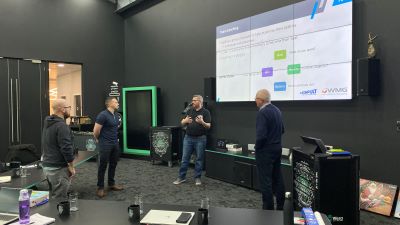
Impacts
As a result of the pilot programme BSSA have committed to offering members the opportunity to join a second Talent Development Programme.
Individuals will benefit from:
- A leadership certificate from the University of Warwick
- Expanding knowledge of products and services within the industry
- The opportunity to network with likeminded individuals
- Additional skills in areas such as presenting, marketing, social media, project management, as well as a boost in confidence
Benefits to the companies involved include:
- The opportunity to promote their brand
- The opportunity to boost their training and development credentials, which will ultimately boost productivity and attract new skills to the sector
James Sweeney, Production Manager at Birmingham based Anopol Group participated in the pilot programme after being promoted to manage a new team. David Cass, Managing Director at the firm said:
“It has been a pleasure observing James’s growth through the BSSA Talent Development Programme. Our team at Anopol are benefitting from his leadership training and networking interaction development. James has clearly grown in confidence and is demonstrating excellent communication skills, attentive process driven approaches to conflicting situations, and mature self-awareness. He thoroughly enjoyed spending time with the programme lecturers and delegates whilst experiencing new business environments. Our next delegate is ready to go!”
Liz McArdle, Innovation Manager at WMG who delivers the programme alongside colleague Steven Norgrove said:
“We are delighted that Adam and the team have decided to invest in this valuable programme for the second time off the back of the successful pilot. WMG is on a mission to equip the leaders of the future with the skills to navigate changes and opportunities in the manufacturing sector. We thoroughly enjoyed collaborating with the participants and seeing them flourish and grow in confidence. We look forward to meeting the next cohort in October.”
Adam Bradley added:
“Our hope is that schemes like this will help to retain and attract talent to the sector which is vitally important for the association and companies across the board. We are excited to witness the journeys that our next set of leaders will go on through the programme.”
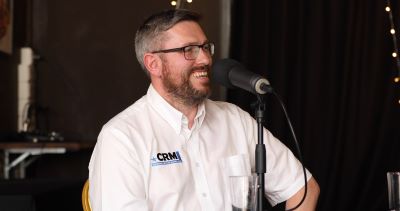
For more information about membership at the BSSA and joining the programme which starts in October visit:
BSSA Talent Development ProgrammeLink opens in a new window
For more information about WMG’s leadership programmes for manufacturing SMEs contact: wmgsme@warwick.ac.uk
A turnover and wellbeing boost at Wrekin Sheetmetal through Made Smarter support
“Working with Made Smarter and having the new system in place has been invaluable for us. It has dramatically improved our production line process and has not only made staff happier but has made it easier for us to onboard new colleagues and products thanks to the system’s ease-of-use.”
Claire Robinson, Managing Director, Wrekin Sheetmetal Ltd
Wrekin SheetmetalLink opens in a new window, based in Telford, manufactures and shapes a wide variety of steel parts and components for a range of sectors, including healthcare, automotive, aerospace, and retail.
Challenge
Although the company were thriving in some areas, there were issues with productivity and data visibility on the shopfloor. They were still printing technical drawings on paper and there were often bottlenecks as one department waited on information from another. The company were not optimised to take on new client products due to a lack of time to develop new processes. This was hindering their ability to grow.
Solution
Managing Director Claire Robinson got in touch with the Made Smarter West Midlands programme, who linked Claire with WMG Engineer, Manikanta Ravi. Mani, with the help of Intern Ravikishore Karuppuswamy, undertook a value stream mapping of Wrekin Sheetmetal’s complete manufacturing process from start to finish, to assess improvement opportunities. He recommended they install a suitable dashboarding solution integrated with current Enterprise Resource Planning (ERP) software MIE Track, using a network of tablets on every machine and in every department to monitor data. Together with WMG’s Denis PelychLink opens in a new window, Made Smarter assisted Wrekin Sheetmetal to access a match-funded grant of £20,000 towards the cost of the new system which reduced the risk associated with the investment.
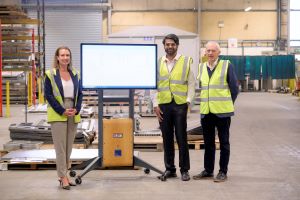
Impacts
- The new system has allowed Wrekin Sheetmetal to devote more time to new product development which will open new growth areas for the business and will help them meet its targets to double turnover by next year
- With the new system in place, Wrekin Sheetmetal are expected to grow capacity by between 10-15% and create seven new jobs
- Wrekin Sheetmetal is now a paperless operation and is using data to drive decision making
- Staff are highly motivated as they now have visibility of their activity, there is reduced time wastage, and they feel bought into the whole manufacturing process. Existing roles will benefit from upskilling going forward
WMG's Manikanta Ravi said:
“Key data such as machine uptime and downtime, technical drawings, and order information is now instantly accessible to every member of the team, with information constantly updated in real time.
The new system has meant the waste identified in our value stream mapping exercise, such as the time taken for the engineering team to pass on drawings to the shop floor team, has been virtually eliminated.”
For the full case study visit:
made-smarter-case-study-wrekin-sheetmetal.pdf (madesmarter.uk)
If you are a manufacturing organisation wanting to work with WMG’s SME team visit:
WMG SME Group Engagement Form (office.com)

Championing the importance of digital in manufacturing, Bridge Cheese picks up two business awards.
Telford based Bridge Cheese has gained two prestigious awards for the way it has harnessed digital technology to grow turnover to £30m in five years. Working with WMG through Made Smarter West Midlands, they have implemented a series of recommendations that have improved efficiency and enabled growth.
Background
Bridge CheeseLink opens in a new window, based in Telford, supplies a variety of cheese and dairy products to the wholesale market, with many of its customers working in the food service industry or food manufacturing. Since its inception in 2018, it has grown rapidly, achieving double-digit growth year-on-year.
Challenge
Bridge Cheese had a mission to double its turnover from £30 million to £60 million in three years. However, to mitigate the pressures of rising costs and to maximise profitability, the two directors Michael Harte and Martin Bowden knew they had to tackle the efficiency of their processes. They were also keen to address issues with stock control and production management.
Michael Harte said:
“We realised that for us to grow further, the analysis of our production processes and costs needed to be a lot better. We had previously relied on spreadsheets and paper records to monitor much of our business’s performance.”
They were aiming to create a smart paperless factory with some automation that would enable them to grow without too much additional labour.

Solution
Telford and Wrekin Council referred the duo to the Made Smarter West Midlands scheme and Made Smarter digital expert Martyn Mangan recommended WMG come in to undertake a thorough audit. This included a “Digital Roadmap” highlighting the steps needed to digitise the business and boost productivity.
WMG's Denis PelychLink opens in a new window worked with Bridge to understand their requirements and what was impeding their growth potential. He suggested a new Enterprise Resource Planning (ERP) system would help improve real time data and visibility to better manage processes. He reviewed various solutions and providers before recommending a specialist food industry package with proven integration to Sage 200, which they were currently using.
The software and services cost was £70k but through Made Smarter, Bridge was able to access a £20k grant. During 2023 using a phased approach, the company implemented the new system which included customised KPI/status dashboards for factory visibility and decision-support.
Impacts
Now up and running, the new system handles everything from tracking orders, stock taking, monitoring machine uptime and downtime, and producing instant quality control reports. Key expected benefits include:
· 20-30% year-on-year growth expected, from £30m to £60m+ revenue in 3 years, including increasing export sales from 2% to 20%+
· 100% reduction in ‘on-time delivery failures’ of orders, plus a saving of the time wasted resolving production issues due to stock issues
· 15-20% improvement in current process efficiency, from process automation across order processing, planning, and production execution
· 10-15% additional efficiency improvement through shop floor digitisation of food safety compliance data capture and management
· 50% reduction in stock days which is around £1.5million of cash freed up to support investment

The outstanding results led to Bridge Cheese being crowned as overall winner of the Made Smarter Adoption Award for the West Midlands region in Birmingham as well as in their own area of the Marches. They represented the West Midlands at the national Made Smarter Awards on 27th June.
Testimonials
“For SMEs like us, support from a scheme like Made Smarter is so important. As part of this journey, Denis’s role became akin to a “non-executive director” advising us in all matters IT related. We are now taking the next steps towards a digital future for our business, and we would encourage others in our position to do the same.”
Michael Harte, Director, Bridge Cheese Ltd
“Bridge Cheese were a delight to work with and are highly motivated to build on their already excellent reputation for service quality. The new system will enable them to achieve their growth ambition without any risk to delivering on client expectations. There are many additional areas that they can focus on with digital going forward such as further automation which is very exciting.”
Denis Pelych, Digital Manufacturing Advisor, WMG, University of Warwick
To find out more about working with WMG on digitising your business contact WMG's SME TeamLink opens in a new window
For further information on Bridge Cheese visit: Welcome to our World of Cheese - Bridge CheeseLink opens in a new window
To read the full story and watch the video about Bridge Cheese’s journey on Made Smarter visit: Case Study - Bridge Cheese | Made SmarterLink opens in a new window

Machine learning project automates complex tooling job at Expert Technologies Group
A two-year Knowledge Transfer Partnership (KTP) between WMG, University of Warwick and expert industrial automation specialist Expert Technologies GroupLink opens in a new window has introduced machine learning into a range of engineering settings that were previously thought too complex to implement. KTP Associate Mateusz Ogrodnik reduced the time of designing new mechanical fixture plans* from weeks to minutes.
Challenge
Historically the job of creating mechanical fixture plans was deemed too complex to automate. Despite involving repetitive tasks, the processes were too nuanced for simple automations to handle, and tooling designers were still an essential component.
However Expert Technologies were keen to devise and implement a novel approach to this unsolved problem, so that designers’ time could be better utilised on higher value, strategic tasks in the business.
The key challenge was the sheer computational complexity of this process. A typical fixture plan has around 40 elements which would mean that around 250 parameters had to be implemented into an automated solution.
As part of this project, Expert wanted to create and embed a systematic approach to solving complex engineering problems for the future. With the use of machine learning on an upward curve, this project would pave the way for them to continue to use this kind of technology for other hugely complex problems.
Solution
With the support of WMG, they opted to apply for an Innovate UK funded Knowledge Transfer Partnership (KTP). KTPs link forward thinking businesses with a knowledge base to deliver on an innovative project led by inspired graduates.
Initially, Knowledge Transfer Associate (KTA), Cesar Reyes, was appointed. His work laid strong foundations and a year later, a second KTA, Mateusz Ogrodnik joined the team. His approach, thanks to experience in optimisation and software development, along with support from WMG's Professor Pasquale FranciosaLink opens in a new window, led to the development of a completely novel set of algorithms that reduced the computational complexity.
Mateusz arranged meetings with senior engineers at Expert to understand how an experienced designer would approach the problem which helped to speed up the time it took for the automated system to create a design. This was followed by building a prototype app, where multiple case studies could automatically be tested. As the number of bespoke algorithms grew, and time left to create a solution decreased, Mateusz spent time working directly with the engineers to undertake further beta testing to arrive at the final prototypes. Mateusz also attended the Association for the Advancement of Artificial Intelligence conference in Canada, where he was able to gather further insights for this project as well as other opportunities to take forward at Expert.
Impacts
· A final prototype tool was created which reduced the time of developing mechanical fixture plans from weeks to hours which will lead to significant cost savings for the business.
· Mateusz has been hired by Expert as a Senior Software Development Engineer.
· Expert has put new software development approaches into practice which will de-risk other software-based projects.
· The project opened up a number of ideas for other Expert employees to build, develop and share within the company.
· New software projects, including complex machine learning tasks have been brought forward and de-risked thanks to this project.
· Expert has now applied for a further Accelerated Knowledge Transfer grant to work on a similar project.
Ian Snape, Engineering Director at Expert Technologies Group said:
“To witness the ground-breaking final prototype demonstration was a realisation of an unrealistic idea four years ago. Not accepting the ‘norm’ and embracing development failure as an opportunity to dissect and optimise, is the heartbeat of this achievement. We celebrate the powerful new fusion of engineering and data science within this Expert / WMG collaboration and look forward to the next set of limitations we rip up.”
WMG Reader and academic supervisor on this project Pasquale Franciosa said:
“The work with Expert Technologies Group through the Knowledge Transfer Partnership root is great evidence of transferring academic research outputs into industrial operation. The project nicely bridged engineering design with digital technologies and proved that this is the way forward to support business growth, whilst releasing capacity and maximising productivity.”
For more information on working with WMG on KTP projects contact wmgsme@warwick.ac.uk
For more information on Expert Technologies Group visit:
Expert Technologies Group | Industrial Automation Technology
*A fixture is a device for locating, holding and supporting a workpiece during a manufacturing operation. Fixtures are essential elements of production processes as they are required in most automated manufacturing, inspection, and assembly operations.
Flux Aviation flying high as business transitions to the next level
A WMG internship to embed 3D scanning technology into the business leads to big efficiency gains and the opportunity to transform the aviation industry on its pathway to electrification.
Background
Flux Aviation is an innovative start-up on a mission to accelerate the transition of aviation towards electric power. Its technologies will enable zero emission aviation from two-seat trainer aircraft and up to 50-seat regional airliners. Its core innovations focus on electric motors and battery modules that have been designed from the ground up specifically for aviation applications. The team were recently propelled into the limelight as overall winners of the Manufacturing Start-up Award at the Made in the Midlands Insider Awards.
Challenge
Flux Aviation develops complete systems that include electric motors, batteries, and control electronics all in one package designed to be retrofitted into a range of existing aircrafts to replace combustion engines (e.g. traditional ROTAX engines).
The company is targeting direct compatibility with 80% of aircrafts on the market, enabling aircraft manufacturers to offer electric variants of their products with minimal re-design effort. The current process of building a design library of compatible aircrafts is very manual and time consuming. It requires moving the aircraft to Flux Aviation premises and taking measurements manually. Founders Radovan Gallo and Neofytos Dimitriou decided to invest in 3D scanning technology to improve the process but were unsure how best to embed it in the business and did not have the expertise to do all the necessary tests to prove its efficacy.
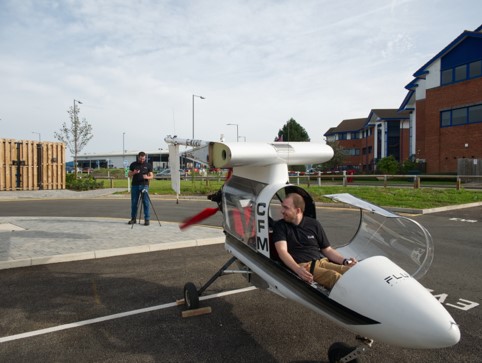
Solution
Already engaging with WMG through the Natwest funded Clean Transport Accelerator programme, the duo were made aware of WMG’s internship programme. They took on Design Engineer Intern, Aryan Bharmani with supervision from WMG’s Manikanta Ravi to create a series of processes and workflows that would maximise the benefit and accelerate the speed of implementing scanning technologies in the business.
Ultimately the process had to be customised to Flux’s needs and fully documented and tested. Aryan worked on configuring the scanner for optimal performance, testing it on engine bays, fuel tanks, fuselage, and mountings all at different resolutions. He designed an appropriate workflow from pre-processing all the way to post-processing scan data, including looking at ways to export scan data as stereolithography (STL) files by reducing size and without compromising quality to carry out design work in CAD software for conversion into solid bodies. Additional evaluation and verification work was carried out, as well as the creation of Standard Operating Procedures.

Impacts
· As a result of the internship project, Flux Aviation is now able to measure and design aircraft engine mount parameters using scanning technology with a deviation of less than 1%;
· The standard workflows produced by Aryan have given Flux the confidence to use scanning technology in the aircraft electrification process, eliminating the need to move the client aircraft from its owner’s hangar for retrofitting;
· The new scanning technology has reduced aircraft measuring time from four weeks to just two hours (a reduction of 99.7%) increasing the company bandwidth to deliver more client projects, accelerating the transition of aviation to zero-emission electric power;
· This new capability will enable Flux Aviation to conduct the aircraft electrification process outside the UK, opening up opportunities to sell in European markets;
· The project led to new quotations for projects worth £300k and the company are hoping to convert those as well as grow the order book by a further £300k in the next three months.
Testimonials
“The WMG internship programme has been incredibly helpful. We identified a gap in our capabilities and with the help of WMG experts and a highly skilled intern we were able to address it in a quick and cost-effective way. The programme requires minimum additional overhead for recruitment and ongoing management. It is an incredible resource for an SME like us and we would be delighted to use this programme again in the future.”
Radovan Gallo, CEO, Flux Aviation Ltd
“This internship provided valuable hands-on experience in cutting-edge technologies for electrifying aircraft, improved my technical skills, and contributed to my employability in the engineering field, particularly in areas related to design, scanning, and workflow optimisation.”
Aryan Bharmani, Design Engineer Intern
“WMG's Internship programme helped Flux Aviation identify the right talent to address its skill gap and accelerate their vision. It also helped Aryan to initiate his professional journey in the manufacturing world under an expert’s supervision, thereby contributing to the development of a skilled workforce in the UK.”
Manikanta Ravi, Engineer, Business Transformation, WMG
Notes
*Flux Aviation's most recent accolades are:
- Most promising solution by Innovation Zero
- Manufacturing Start-up by Made in the Midlands
- Cleantech Startup of the Year by the Midlands Startup Awards
For more information on Flux Aviation’s work and mission visit: Flux Aviation
For more information on working with WMG's SME team and internships email wmgsme@warwick.ac.uk
A sustainable edge leads to transformative changes at Alpha Anodising
“The work undertaken in this project has so far exceeded our expectations, we are looking forward to getting the new system up and running in the business and continuing our productivity push through sustainability measures.”
Leslie Sharp, Managing Director, Alpha Anodising Ltd
Background
Alpha Anodising was formed in 1972 to fulfil a requirement for quality black anodising of equipment for the motion picture industry. Anodising is an electrochemical process that develops an aluminium oxide coat on the surface of a part or product. This protects the product from wear and tear as well as enhancing the overall look.
Challenge and Drivers
Alpha Anodising were on a mission to develop their sustainability credentials and reduce the costs of running their energy intensive shop floor, which houses a swathe of large bubbling tanks preparing anodising treatments ready for products including high end consumer electronics, and industrial process equipment.
Another key driver was that more and more of their clients were requesting information about their Environmental, Sustainability and Governance (ESG) targets.
To get an edge in this area, they wanted to energy monitor key equipment including three electrically powered 240V heaters heating a 1 1000L boil tank used during the anodisation process, which were responsible for 37% of the entire site’s energy consumption.
They also wished to improve the current method of managing their equipment across the factory more generally. In the current state, employees were coming in early to manually turn on heaters to get the boil tanks up to temperature ready for production. This was not ideal when arranging weekend or shift work and when the clocks changed, as it involved having to manually reprogram heater timers on up to 50 tanks.
Solution
Tap into a network and get to grips with baseline data
The company joined WMG’s Net Zero Innovation Network and were one of the first companies to benefit from a tailored manufacturing energy toolkit to better understand energy hotpots in the business.
We measured the electrical energy consumption over a six-week period, looking at the consumption of energy, the cost and carbon equivalencies, as well as testing some insulative lids to compare energy consumption before and after. As a result, a full report with a range of energy saving recommendations was presented including heater upgrades, timers, and the introduction of a dashboard to increase visibility of energy usage in the factory.
Access funding to make a difference
Following this initial project, Alpha secured a grant through the Innovate UK Business Growth programme to develop a solution that would network, centralise and simplify the process of managing the temperature of the boil tanks in the business in order to increase efficiencies and optimise energy usage.
WMG’s Julian Swiestowski, identified that there was an opportunity to use IoT (Internet of Things) technology and connectivity to make this happen.
Julian explored a range of off the shelf solutions for Alpha, that were competitively priced, easily programmable, and possible to retrofit beyond this project to other equipment. He settled on some factory automation software from the Siemens logo series. It provides a compact controller that links directly to the cloud so that the company can set and adjust the temperature for the tanks away from the shop floor, in the office or on tablets and mobile devices at home.
With this solution there is now the opportunity to monitor data over time to understand energy usage, system performance, and productivity and make changes accordingly. The tanks would also be set with thermostats.
Impacts
Whilst initially Alpha Anodising started work with WMG to enhance its ESG activity, the collaboration and IoT project will lead to a number of transformational benefits:
· The new IoT system will save Alpha thousands of pounds a year in energy costs through automation and better insight into usage;
· The new system will allow for higher levels of productivity in the business and enhanced quality as there will now be a whole range of data that can be used to tweak production parameters;
· The system will free up staff to work on other activities which will increase efficiencies and there will also be opportunities for the upskilling of staff to use the new digital systems;
· There are now a range of sustainability-led ideas developing within the firm such as insulation on tanks and the introduction of a two-stage counter current rinse system to reduce water consumption by 40-50% They have also invested significantly in Solar Energy Panels and new equipment such as a top of the range Timesaver linishing machine and additional bead blasting cabinets. Link opens in a new window
Link opens in a new window
For more information on working with WMG's SME group contact wmgsme@warwick.ac.uk
For more information on Alpha Anodising visit: https://www.alphaanodising.co.uk

Flexing their operational muscles – Goodflex Rubber Ltd set to expand with new ERP system
“Our involvement with the Made Smarter programme gave us the confidence to move forward with one of biggest changes to the company in its 22-year history. This investment will not only allow us to improve our efficiencies but also provide us with the security to continue to grow in the future, aiding us to deliver even better products and services to our customers and ensure we remain a leader in the industry.”
Natalie Benwell, Commercial Manager, Goodflex Rubber Ltd
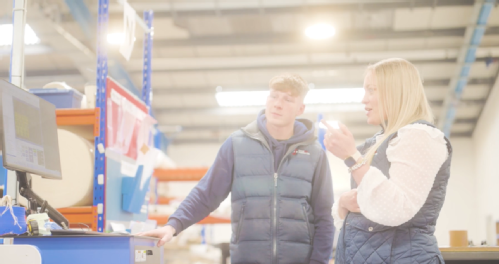
Warwickshire based Goodflex Rubber Ltd are world renowned manufacturers of high quality, bespoke-design silicone hoses, serving a range of industries including automotive, pharmaceutical, renewable energy, and food.
Challenge
Goodflex had plans to double their turnover over the next three years but were concerned that their Factory Management System was holding them back from achieving this growth. They had been using their current bespoke ERP system since the business was started and it had evolved over time to be used for multiple areas within the business, including material resource planning, accounts, stock management, work order management, invoicing, and delivery notes.
But they needed to move to software which would enable their day-to-day operations to be more efficient, allow them to respond more quickly to their customers and futureproof their processes.
Solution
Commercial manager Natalie Benwell got in touch with the Made Smarter West Midlands programme and was introduced to WMG’s Denis Pelych who quickly set about understanding the company’s specific requirements. It was clear that Goodflex needed an enhanced, futureproof, digital system to drive efficiencies and maintain control of some of their more complex product builds, but they were unsure what specific system to invest in.
Denis conducted a two-stage MRP and ERP* vendor selection process, with Made Smarter support and helped Goodflex select an ERP system that offered the capability they needed today, with a degree of futureproofing. The investment required was approximately £100k but Goodflex were able to access £20k with the help of a Made Smarter grant.
Natalie said:
“Denis understood and identified our needs better than we understood them ourselves and then successfully translated them into an RFP (Request for Proposal) that was such a true reflection of our business. His knowledge in the industry, not only opened our eyes to what was possible, but also took us down a route we never knew existed.”
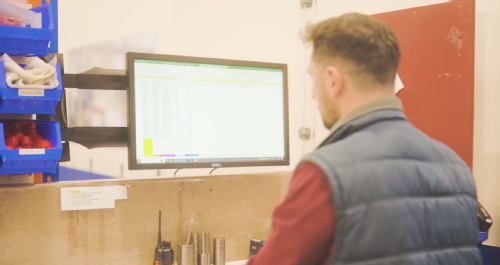
Impacts
- The new system will help Goodflex increase the speed of response to their customers
- The new system will help Goodflex double their revenue to £10m in three years, with the potential to reach £15-20m in five years, whilst maintaining margins and investment
- The system will lead to a 20-30% efficiency improvement from the automation of business processes
- The company expect to see a 15-20% improvement in material supply and stock efficiencies
- Efficiencies gained through the system will lead to higher levels of profitability
- The new system provides better management information with the ability to set KPIs and have greater operational insight in order to make data driven business decisions
- The new system will also improve Goodflex’s business development strategy enabled by greater insight into costs and opportunities
- The new system has improved workplace motivation and will help to retain and develop highly skilled staff
*ERP vs MRP: What’s The Difference? – Forbes Advisor
Read the full story on the Made Smarter website here.Link opens in a new window
Heating up for expansion with Eskimo Products
“WMG have been great to work with, they digested the brief, stuck to it, and delivered a great factory optimisation project. I was really impressed with the level of detail within the report and really enjoyed working alongside their engineers.”
Phil Ward, Managing Director, Eskimo Products Ltd
Background
Luxury radiator and towel rail design firm, Eskimo ProductsLink opens in a new window designs and manufactures a range of top end products with a focus on creating beautiful aesthetics within homes as well as being highly energy efficient. With a design office in Bristol and manufacturing space in Birmingham close to the international airport, the firm were setting their sights on growth and expansion.
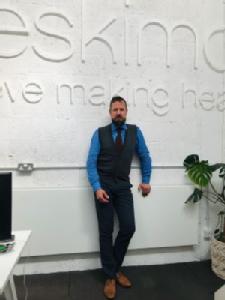
Challenge
The company had plans to move into a new factory in 2025 to scale up production following an increase in demand. They were looking for support to maximise the productivity potential of the layout in the new space and in the existing facility. They also needed support to digitise their manufacturing process.
Solution
Phil Ward, founder of the firm worked with WMG SME group’s Manikanta Ravi and Gun Gokmen to set up a project using Innovate UK Business GrowthLink opens in a new window (previously Innovate UK EDGE) funding with objectives to:
- Measure the current state of the factory to understand what was inhibiting target productivity
- Recommend improvements to increase capacity and reduce wastes on two key product lines (Column and Gordon) using lean methods and automation
The project would allow for a seamless transition and the opportunity to scope any new investments and potential changes before the move - essentially minimising any risks and to avoid any downtime.
Mani and Gun compared current capacity against the required capacity to meet the forecasted demand and identified that there was a shortfall. They performed bottleneck analysis for the overall process flow from customer order to raw materials, and manufacturing to customer delivery.
The extensive study allowed them to identify bottlenecks and areas for lean improvement, as well as make recommendations for where capacity could be enhanced such as an additional spindle tool to reduce CNC Machine setup time, standardising the setup of the powder coating process, improving lighting to reduce the number of re-works, introducing a new cell for assembling, testing and packing, adopting 5S workplace organisation methods and more advanced techniques such as automated welding with a suggested cycle time to meet demand. They recommended a phased approach for improving different areas overall, including welding, machining, and treatment.
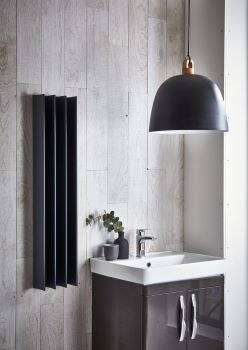
Impacts
- Once implemented, WMG’s recommendations will reduce current bottleneck times by 72% per product on the Column product line and 43% on the Gordon line. So, for every 100 units made, 33 hours can be saved on the Column product line and 20 hours on the Gordon;
- As a result of the project, with the addition of robot welding and a pre-treatment plant, production capacity for the Column line will increase by 360% and for the Gordon line 37%;
- The improvements suggested will lead to estimated additional turnover of up to £365k per year;
- The company is now in a more informed position to make the move to the new space with automation and factory layout proposals that will help them meet capacity and grow the business.
Eskimo are currently working with other WMG colleagues through the Made Smarter West Midlands programme to implement the robotic welding process and will benefit from a grant to make this a reality. They are also embarking on a new WMG project for advice on the best manufacturing techniques and layout to take a new thermal energy storage product to market.

“It was great to work with the team at Eskimo to help them realise some of their growth ambitions through an improved factory layout. With the added digital capabilities proposed through Made Smarter West Midlands, there are even more opportunities for expansion. Innovate UK's Edge programme (Innovate UK Business Growth) helps businesses connect with the right expertise at whatever stage of growth they are at. We are excited to see where Eskimo goes next.”
Engineer Manikanta RaviLink opens in a new window and Industrial Engineer Gun GokmenLink opens in a new window, WMG University of Warwick
Armac Martin reignite sustainability drive with second collaborative project
“Working with WMG again has been really beneficial for us. This project will enable us to lower our carbon emissions, something critical for us from both a CSR perspective and in combating rising energy costs to remain competitive.”
Steven West, Head of Operations, Armac Martin Ltd
Background
In 2021, following the introduction of the UK Government’s Net Zero strategy, luxury brass hardware manufacturer, Armac Martin was one of the first companies to join WMG’s Net Zero Innovation (NZIN) Progamme. They collaborated with us to implement sustainable packaging for key product lines in their business. After exploring recyclable, compostable, and returnable options, a cost effective and biodegradable paper-based material was selected which reduced packing time significantly, leading to productivity gains in the business.
Challenge
With renewed drive to reduce emissions by 50% by 2025 and reach Net Zero by 2041, Armac Martin wanted to work with WMG again to see where they could best focus their attentions to achieve these goals. They joined the NZIN programme on a second cohort alongside Brandauer, Sarginsons, Modpods and McGeoch.
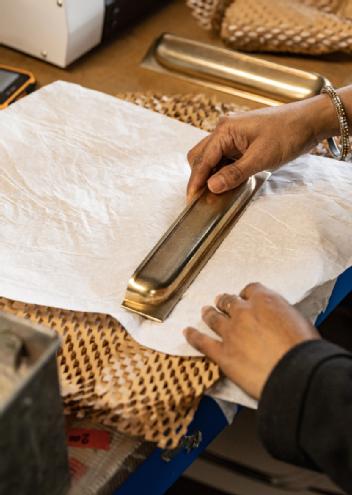
Solution
WMG examined how the company could reduce emissions across Scope 1,2 and 3[i] in the business, through a Greenhouse Gas Accounting project. We highlighted a range of opportunities for them to take onboard as part of a five-year roadmap for sustainable change aligned with business visions and priorities through a NZIN roadmap. Representatives from the company also participated in several workshops hosted by WMG.
Impacts
· The company now have a clear vision of how they are going to reach their 2025 and 2041 targets with an action plan to reduce energy costs in the business, including using data to optimise energy usage, as well as voltage optimisation, insulation, and variable speed drives of machinery,
· They plan to install Solar PV Panels to reduce energy related emissions and susceptibility to grid price fluctuations
· They have the opportunity to access grant funding to install the Solar Panels of up to £100,000,
· They now have a robust sustainability strategy which they communicate to both internal and external stakeholders.
“Armac Martin are a company committed to sustainability and it was great to work with them on a second project looking at energy usage in the business. They are a shining example of how businesses can work towards Net Zero targets while adding value to their clients’ customer experience.”
Archit Tamboli, Technology Transfer Engineer, WMG, University of Warwick
For more info on Armac Martin’s sustainability strategy visit:
https://www.armacmartin.co.uk/
[i] *Scope 1 emissions are the Green House Gas (GHG) emissions that a company makes directly — for example while running its boilers and vehicles.
Scope 2 emissions are the emissions it makes indirectly – like the electricity or energy it buys for heating and cooling buildings, which is being produced on its behalf.
Scope 3 emissions are all the emissions associated, not with the company itself, but those that the organisation is indirectly responsible for, up and down its value chain. For example, from buying products from its suppliers, and from its products when customers use them.
Reaping the rewards of collaboration – further impact for Jaltek Systems as partnership with WMG goes from strength to strength.
Automation project leads to productivity gains and new opportunities to upskill valuable teams.
Background
Founded in 1988, Jaltek Systems are a contract electronics manufacturer with full electronics design capability. They first worked with WMG in 2022 when we helped them with an expansion and new factory layout for new premises. Two years later, having landed new business worth almost £3 million and taken on Nayan the intern that helped them implement production line changes, they contacted WMG again for support with automation.
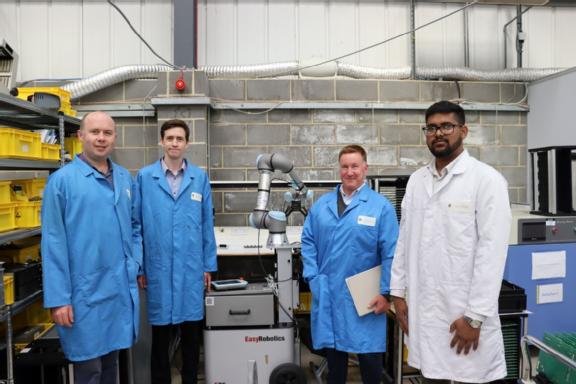
Challenge
Jaltek has grown significantly in recent years with further ambitious plans, and they were looking to adopt digital technology, particularly in robotics and automation to facilitate this growth. Steve Blythe, at Jaltek had visited the Advanced Metal Research Centre in Wales and other SME businesses who had started using collaborative robots (cobots) and had identified that automation could:
· Provide productivity enhancement with the need to recruit less
· Offer extended working hours – machines could operate outside regular working hours
· Help with issues such as the UK’s restrictions on labour movement, which were making it difficult to find new employees with the right skills
· Provide the opportunity for skilled employees to do more interesting, higher value tasks
Already using machines for the surface mount placement process, Steve identified that cobots could also be implemented for post surface mount assembly activity and labelling.
Solution
Following the success of previous WMG internships at Jaltek, they decided that taking on another intern would help them direct the resource needed on this project while saving valuable management time. With WMG supervision, intern Kesava Viknesh was appointed. He initially undertook an automation feasibility study for the complete set of processes in the business, quantifying the benefits of automation for each one. He then conducted a comparison study of different automation solutions, resulting in a list of the top three opportunities. After creating and presenting the business case to the board of directors, Kesava then went on to create a simulation of the automated labelling process to de-risk the investment. Jaltek also benefitted from a pilot trial of automation to assemble one of their products using WMG’s UR5e cobot before investing in their first cobot.
Impact
The internship project led to a range of impacts including:
· Identifying significant productivity improvements;
· A new full-time position for Kesava as an automation engineer;
· The upskilling of existing staff to fulfil higher value skilled jobs now that the cobots can undertake other tasks;
· A change in proposition for new employees, with a focus on highlighting the business’s values;
· Improved precision and uniformity which in turn supports the sustainability credentials for Jaltek as there is less waste;
· The opportunity for extended operations (as robots can work outside regular working hours);
· The ability for Jaltek to keep pace with technological advancements;
· An additional Accelerated Knowledge Transfer (AKT) grant to enable another young engineer to join the firm on a 16-week project to continue with the integration of robotics technology into their processes.
Steve Blythe, at Jaltek Systems said:
“We are continually looking to improve productivity through training, improved processes, and automation. We saw good practice using cobots in other businesses and reached out to WMG to support our plans. We are very happy with the results of the second internship, and we are only at the beginning of this journey.”
Jack Davis, Technology Transfer Engineer at WMG who supervised Kesava said:
“This internship project enabled Jaltek to trial the use of cobots on one of their key processes before taking the plunge to invest themselves, reducing risk and ensuring that they got the exact technological solution for their requirements. Kesava did a fantastic job, so much so that he has now secured a position with Jaltek.”
WMG supports Goodfish on its sustainability journey
Goodfish Group have benefited from WMG’s Net Zero Innovation Network with a tailored project focused on helping them achieve their Net Zero goals.
Background
Goodfish Group is the UK’s leading privately-owned contract manufacturer of plastic and composite components. Its expertise in injection-moulding, extrusion, vacuum-forming, and tooling has been developed through successive acquisitions of leading companies in each discipline.
The group has partnered with WMG at the University of Warwick over the last ten years to work on new product and process development and most recently were one of the first companies to benefit from a new Net Zero Innovation Network which was set up to support SME manufacturers achieve their Net Zero goals.
Challenge
Goodfish were keen to map their current waste streams to identify opportunities where they could reduce emissions and increase their environmental, financial, and social sustainability. They recognised that the St Asaph site was the least mature in terms of sustainability, therefore asked the WMG team to focus on this site initially.
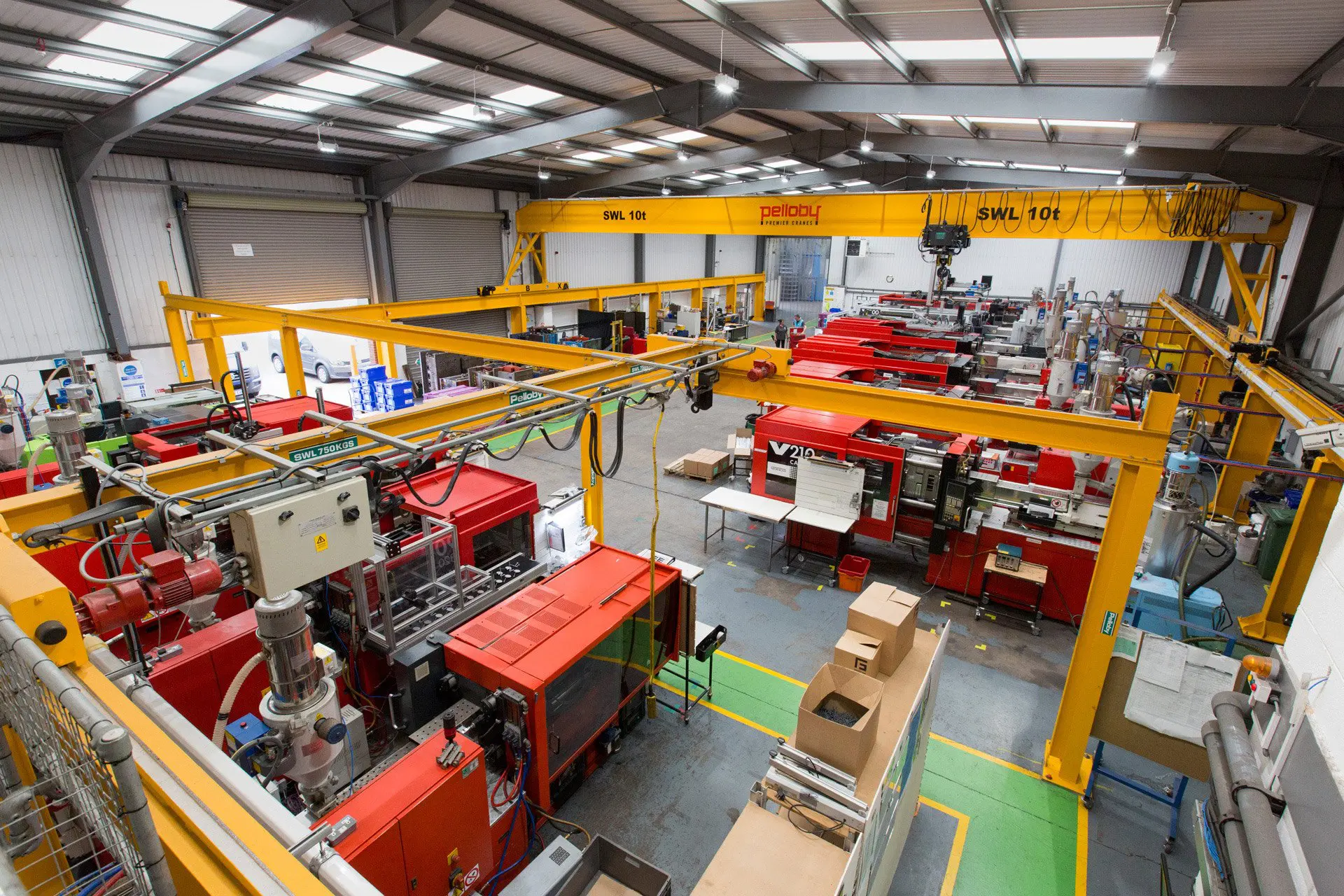
Solution
WMG undertook a Factory walk at St Asaph to identify the waste streams on site in terms of internal waste generation (extrusion and injection moulding) as well as external. They examined waste across Scope 1, 2 and 3 emissions*. Recommendations were then made via the 5R model which helps companies see where they can reduce waste, recycle, reuse, recover or ultimately refuse or prevent the waste happening in the first place.
Goodfish were advised to start making cultural changes within the organisation to encourage better monitoring of wasteful practices and to understand which machines were most energy intensive. WMG suggested using reusable packaging, finding more local recycling facilities, and reusing waste material for new products. They also suggested implementing thermal insulation jackets on injection moulding machines which on a 500T clamp force machine for example could offer a 13% energy saving over a 13-hour shift.
Impact
- Since joining the WMG cohort, Goodfish have taken significant strides forward with their waste reduction activities.
- They have invested approximately £70k in monitoring equipment to enable visibility of energy usage of all machinery across all three sites. With such granularity, they can make changes and updates to machines for optimal energy usage.
- They implemented the insulation jackets on 70 injection moulding machines which has saved 20% on monthly energy consumption
- They are now able to attribute the carbon footprint or CO2 equivalent for each product/part made, which has boosted their sustainability credentials with their clients
- They are now implementing total preventative maintenance and staff training programmes across the group to make even more savings
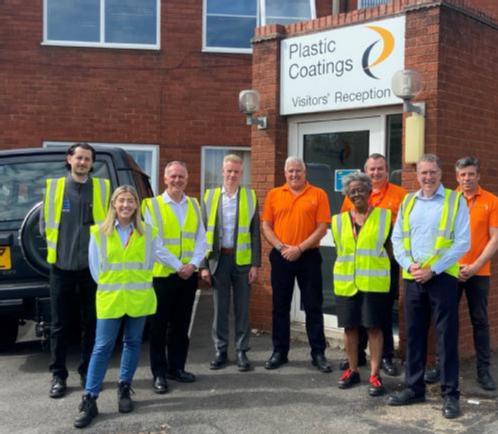
Guy McDonald, Director and Business Transformation Manager at Goodfish said:
“The NZIN programme was useful to meet other business leaders on similar journeys and to understand the Net Zero requirements from an OEM’s perspective, in this case Polestar.
At Goodfish, data is the bedrock of all that do we in terms of energy efficiency. We pretty much know where all the energy hotspots are in the business now and can therefore make targeted changes to boost our Net Zero credentials going forward.”
WMG’s Net Zero Approach
WMG’s Net Zero Innovation programme brings businesses together to gain knowledge about sustainable manufacturing processes, implement change and grow. As well as offering events, workshops, and a best practice visit to a company already implementing sustainable approaches, participating companies also benefit from a tailored project, Net Zero assessment and roadmap report.
For more information about joining a cohort email: wmgsme@warwick.ac.uk
*Scope 1 emissions are the Green House Gas (GHG) emissions that a company makes directly — for example while running its boilers and vehicles.
Scope 2 emissions are the emissions it makes indirectly – like the electricity or energy it buys for heating and cooling buildings, which is being produced on its behalf.
Scope 3 emissions are all the emissions associated, not with the company itself, but those that the organisation is indirectly responsible for, up and down its value chain. For example, from buying products from its suppliers, and from its products when customers use them.
Investing in Digital leads to Brighter Future for ECAM Engineering
“Business has been amazing and last year we had our best year ever. Turnover was up 20% on the previous year.”
Phil Arme, Managing Director, ECAM Engineering Ltd
Background
ECAM Engineering began life in 1968 based on the Derbyshire/ Staffordshire border before moving to Cheadle in the Staffordshire Moorlands, near Stoke on Trent.They specialise in laser cutting, metal fabrication, CNC machining, welding, and painting. They worked with WMG recently through the Made Smarter West Midlands programme.
Challenge
Phil Arme, Managing Director at ECAM Engineering has been investing in the company’s digital transformation since he bought it ten years ago. Having already implemented one robotic welder in the business he wanted to explore automation further to increase productivity and to allow staff to develop skills in other areas.
“We recognised we needed to go down the road of having a second robot. I had read about the Made Smarter programme, and I thought it could help us make a decision about which robot would be best for us since we are not experts in that field.”
Solution
Through Tim Kirby at Made Smarter West Midlands, ECAM were introduced to WMG’s Ioan Lutas who set out a digital roadmap for ECAM with advice about how best to set in place a new Panasonic welding robot to help produce parts for key clients such as JCB.
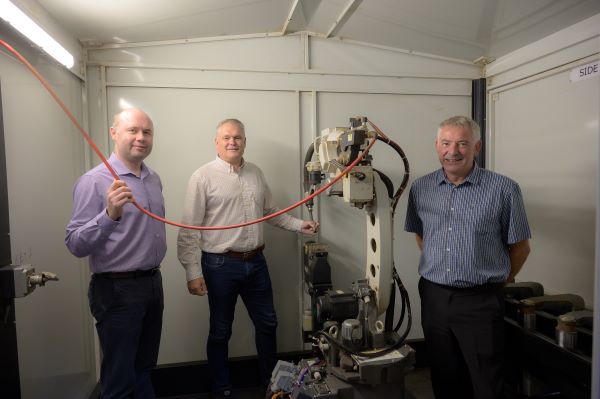
Impacts
The benefits of the second robot were noted immediately.
Overtime is no longer needed to complete jobs and the level of productivity is up
The robot has sped up processes and shift patterns have been changed to reflect this with staff now able to diversify their skills and work on other activities
ECAM went on to invest even further in digital technologies including a fully automated laser cutting machine
To read the full story visit:
https://www.madesmarter.uk/media/u0ahxjlt/made-smarter-case-study-ecam-engineering.pdf
And to see the video case study visit:
https://www.youtube.com/watch?v=4qdf4-GxnS4&t=2sLink opens in a new window
Manufacturing Energy Toolkit in Action Alucast cuts energy costs by £78,000 with clever machine monitoring
“In the current energy crisis, the Manufacturing Energy Toolkit (MET) has been beneficial to Alucast, as we are a high energy user with three aluminium foundries. The team at WMG has helped the company reduce our energy usage, lower carbon emissions, and save waste.”
Tony Sartorius, Chairman, Alucast Ltd
Challenge – How to reduce energy usage in busy machine shop
Alucast is an aluminium foundry in Wednesbury, (West Midlands), and a very high energy user. Like other manufacturers, Alucast were struggling with increased energy prices. Their fixed rate was coming to an end, with prices going from £0.14 per kWh to £0.44 per kWh - a 300% increase in energy costs. They needed to reduce their consumption drastically and identify energy wastes.
One key area to focus on was to investigate the energy consumption of their machine shop and to see whether there was scope to minimise energy usage there.
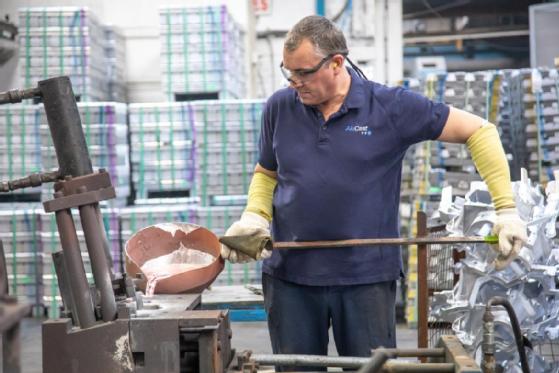
Solution – Make use of WMG’s Manufacturing Energy Toolkit
Alucast heard about WMG’s Manufacturing Energy Toolkit which was launched at the height of the energy crisis to help manufacturers identify practical ways to reduce energy usage and quickly got onboard. Sustainable manufacturing specialists Laura Downey and Veer Angadi at WMG suggested that Alucast should implement shut down periods over the weekends rather than leaving machines idle. A common myth with manufacturers is that by fully shutting down machines, there will be issues with restarting them again. However, this is an easy quick win to begin making savings.
They then kick started a project to identify the potential savings and de-risk the process of shutting down machines both over the weekend and during the working week. Using a series of monitoring devices, they measured consumption of four different types of machines (17 machines in total) when left idle compared to being switched off. Essentially by managing machine uptime more effectively to ensure energy is only used when processing parts, it eliminates idle time energy use to create substantial CO2 reductions, whilst at the same time reducing KWhs used.
capture the heat.
Impact – Big cost and CO2 savings
Through their analysis, Laura and Veer discovered that over a two-year period Alucast could save 95,107 kWh in energy usage, which equates to £78,225 and 19,971 kg in CO2 equivalent. To put this into perspective, 19,971 kgCO2 is equal to 19.9 tonnes. This is the equivalent of driving 65,670 miles in an average car or driving around the world in a diesel car 2.86 times.
And this is for just two years, the savings will be more and more over time.
The percentage energy consumption saving over the weekend is 100% but over a working week this will save an average of 19%.
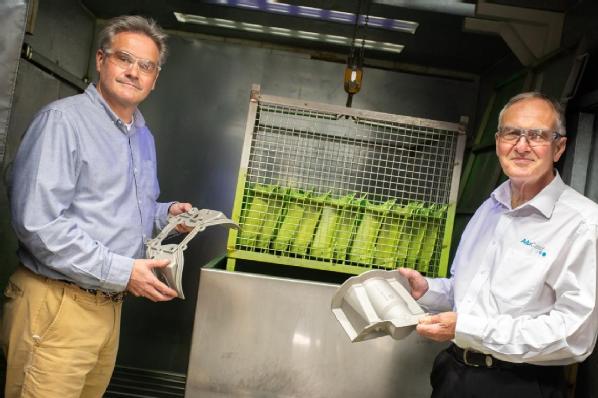
“This is a great example of our Manufacturing Energy Toolkit in action. The programme is really ramping up now, helping many manufacturing businesses both save energy and increase profitability while also supporting the UK with its net zero targets.
Dr Mark Swift, Director of SME Engagement, WMG, University of Warwick
For more information on working with WMG, please email wmgsme at warwick dot ac dot uk


Transformation on shop floor leads to big capacity gains for flue and chimney manufacturer
Midtherm Flue Systems based in Dudley have big plans to grow their family business and a series of projects with WMG at the University of Warwick will lead to additional revenues worth at least £143,000 per year.
Company Background
Established in 1968, Midtherm Flue Systems is an environmentally aware flue manufacturer specialising in the production and distribution of Class 1 Chimneys, Vitreous Enamel and Flexible Liners for the Wood Burning Stove industry with one of the largest flue manufacturing, storage, and distribution facilities in the UK.
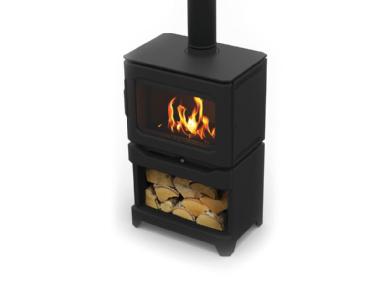
Challenge - Surging demand creates capacity issues.
Midtherm were keen to capitalise on a surge in customer demand for two products, that could yield two-three times their current sales levels. However, they did not have the capacity to deliver on the extra demand with their current factory layout.
Solution
Step 1 – Capture the data and look at new possibilities.
WMG’s Business Development Manager Russ NobleLink opens in a new window met with Midtherm to understand their key challenges, and suggested they undertake a business transformation project with Industrial Engineer Gun GokmenLink opens in a new window and Mechanical Engineer Manikanta RaviLink opens in a new window. The team undertook a series of site visits and product line walks to capture actual production data and compared it to the production figures needed to allow them to meet the required capacity.
Using a Lean 6 Sigma approach they identified the wastes and bottlenecks in the process and then made a series of recommendations for how capacity could be increased, including:
- optimised process flow and optimised layouts
- adopting single piece flow production
- implementing workplace organisation methods
- machine setup reduction methods
- further capacity improvement options, such as machinery for specific processes, digitalisation, technology upgrades, and additional shifts
These changes alone without digitalisation and technology upgrades yielded production increases of 50% for a high selling product but the team thought there was scope to make even bigger gains by working further on the bottlenecks.
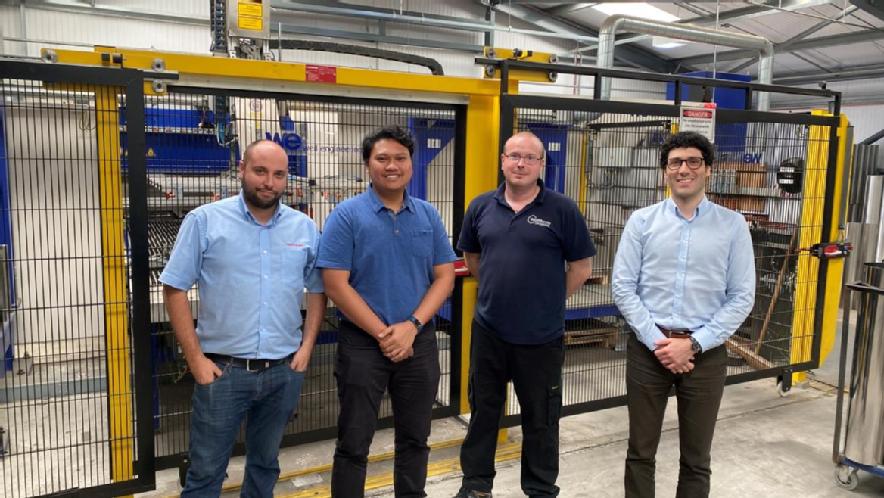
Step 2 – Bring in some extra resource to make plans a reality.
The team identified that there was an opportunity to reduce the unit time of two bottleneck processes the (Rolling & Welding and Lagging) and suggested the best way to go about it was to get some interns involved. Internships are a great way to get important projects delivered with fresh ideas and insight and they help encourage young engineers to develop careers in manufacturing firms.
Graduate engineers Febry Wardhana and Raneem Doudin joined the firm for two 12-week projects working on unravelling the issues and were supervised by Gun and Manikanta. They spent time focusing on machine capabilities to increase the speed of processes, identifying various problems, looking at the root causes, and creating solutions as they went along.
Febry for example suggested using a hoist system with a lifter to eliminate the need for a forklift truck for transporting raw materials, eliminating numerous manoeuvres, and eventually drastically reducing transport time. Raneem worked to resolve a blockage in a machine that undertakes the lagging process (injecting of insulation material into a flue) and developed an innovative tool design, which was delivered as a 3D printed prototype to speed up this process.
Impact – Transformation launched ready for the Winter rush.
Over the course of the three projects conducted between December 2022 and September 2023:
- Midtherm are now running at full capacity and ready for the high winter season
- Yearly production capacity of the two highest selling products each increased by approximately 50%
- For these two products, the lines can now produce an additional 2,064 items per year
- Yearly production capacities of several other products, which were transferred to the newly set up high performance line also increased by approximately 50%
- Midtherm achieved huge savings especially on labour time per part, and reduced scrap rates,
- They also hired intern Febry WardhanaLink opens in a new window, to continue their continuous improvement journey
Kevin Woodbine, Operations Director said:
“We have made huge improvements from actions based on WMG’s original report and we have now made additions to the layout for other large volume high labour-intensive products.”
Mick Whale, Training & Development Manager said:
“The team including the interns has done a great job over the last few months and have opened up a lot of new doors for us all.”
Gun Gokmen, Industrial Engineer at WMG said:
“Midtherm have big plans to double the turnover of their business by 2025, and it has been a pleasure to help them build capacity in the factory to make these plans a reality. Midtherm now have a series of options to take forward and with minimum input and investment, they are already making big productivity gains.”
Manikanta Ravi, Mechanical Engineer at WMG said:
"Midtherm's adoption of single-piece flow has brought remarkable results, boosting production, fostering collaboration among workers, and reducing scrap rates—a prime example of how to make improvements in operations”.
For more information on working with WMG, please email wmgsme at warwick dot ac dot uk

Solutions for sustainability in the NHS, re-using materials for a greater good
A bitesize insight into a project to prove the viability of recycling unused gown and curtain waste in hospitals undertaken by WMG’s SME group and Airguard Envirocare Ltd
Company Background
Airguard Envirocare Ltd were established in 1985 and primarily manufacture filter systems which are used in hotels, restaurants, office buildings, and hospitals. During Covid, the company manufactured PPE for the healthcare sector.
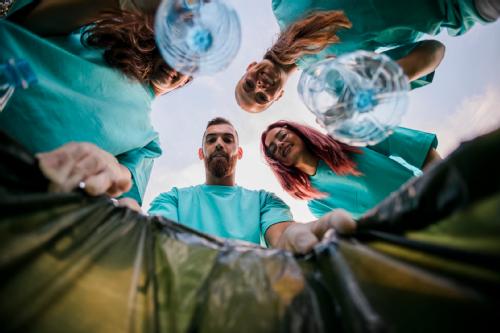
Project Overview
Airguard is working to create a more sustainable and resilient supply chain. Initially they got in touch with WMG regarding the issue of single use plastic waste in the NHS. They had identified an opportunity to recycle the many tonnes of unused gowns and curtains that are thrown away each year.
Technology Transfer Specialist Chapa Bandara undertook a series of tests on a batch of plastic granules that had been converted from gown and curtain waste to determine the properties and potential to create new products. She also injection moulded parts using the plastic and compared it against virgin polymer. Through the tests she found the recycled polymer was stiffer than virgin and proposed that products such as bins and trays could be created with it.
Colleagues in WMG’s SME group Archit Tamboli and Tony Zeng also undertook a separate project redesigning an Airguard filter product to reduce emissions and costs.
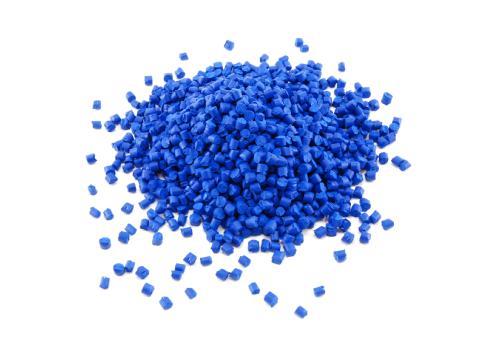
Project Impact
Since working with WMG, Airguard has:
- Established a new product and partnership opportunity with the NHS by proving that recycling polypropylene material from unused hospital gowns and curtains is viable
- Identified the potential to save hundreds of thousands of tonnes in CO2 emissions through recycling initiatives
- Re-designed one of their filter products which provides an opportunity to reduce carbon emissions and enter a new market
“The work WMG did for us helped us prove the viability of creating a more circular system when it comes to the provision of hospital equipment and workwear. We are excited by the potential of this project and look forward to having more discussions with hospitals about us helping them to recycle and reuse materials in the future.”
Maqq Rafique, Director, Airguard Envirocare Ltd
“There is much potential to explore how single use plastic waste can be re-used and repurposed in a variety of applications. This project offers a transformational opportunity for the NHS going forward and we were delighted to work with Maqq and the team to build its scientific case.”
Chapa Bandara, Technology Transfer Specialist, WMGLink opens in a new window
For more information about working with WMG, please email wmgsme at warwick dot ac dot uk

Recipe for Success with Ludlow Nut Company
WMG and Made Smarter West Midlands work creates efficiencies worth over £125k for Shropshire based food manufacturer
The Challenge
If a business is growing, it will get to a point where it just cannot manage its systems on an ad hoc basis. This was the case with the Ludlow Nut Company Link opens in a new windowin Shropshire, a small artisan producer of healthy food that was seeing big increases in demand for its own products as well as its white labelling service for other brands.
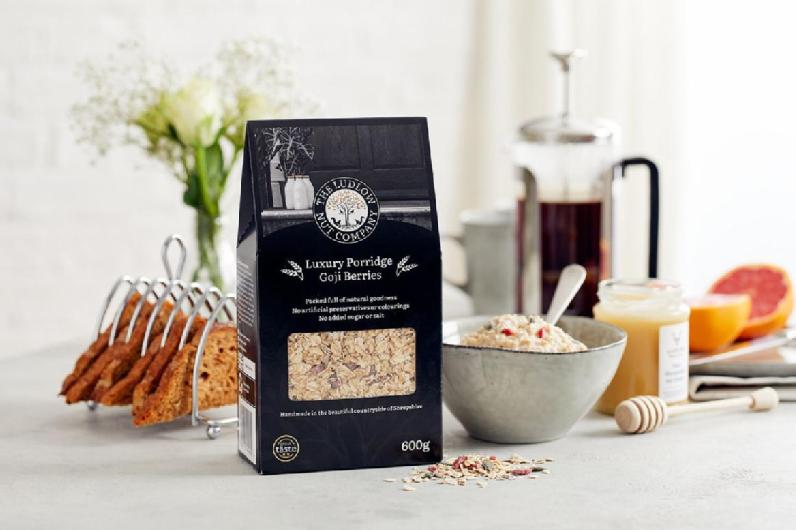
Helen GrahamLink opens in a new window who co-founded the business in 2014 said: “I think we had got to the stage where we had become too big to maintain our efficiency through our previous system and that was the key for us. The worst thing is when you are about to start making a product and you realise you don’t have a particular ingredient because that causes lost time and re-shuffling other orders.”
The Solution
Through the Made Smarter West Midlands programme, Denis PelychLink opens in a new window, digital manufacturing advisor at WMG worked with Ludlow to get the go ahead for a grant towards a Material Requirements Planning (MRP) software-based system.
Denis said: “We helped the Ludlow Nut Company to understand the business risks associated with their previous approach to IT systems via a simple architecture diagram and an options and implications session. We coached their Project Manager, ran weekly meetings and then handed back to the Project Manager once they were feeling confident.”
Their new system allows them to track stock from the goods-in stage through to recipe production, packaging, and finally dispatch to customers.
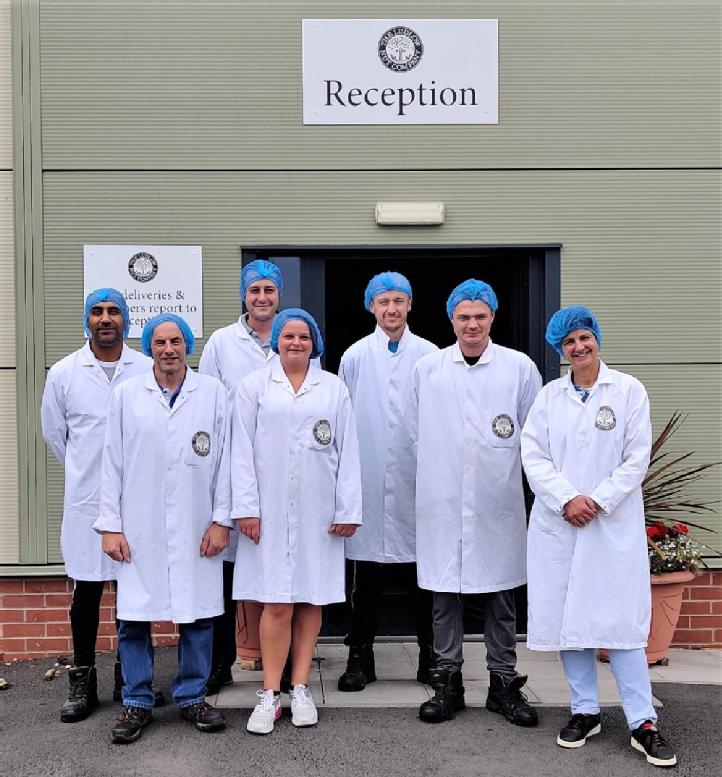
Impact
The efficiencies noted because of the system include:
- 30% reduction in time to process orders and plans
- 10-20% reduction in management time compiling reports (re-focused on strategy)
- 10-20% reduction in non-value-added admin, expediting & error correction
- 15-20% productivity improvement from shop floor data capture
- 5-10% reduction in downstream manufacturing waste (fewer errors)
This amounts to total savings of 125k per annum and equates to extra capacity to improve the company’s bottom line.
Read more here about the project and the results here.
For more information about working with WMG's SME Group email wmgsme@warwick.ac.uk

Aviation history gets vital boost through WMG internship
Company Background
Kennet Aviation is a specialist vintage aircraft restoration business with a team of 11 experts making Seafire, Spitfires and others airworthy again. Based in Bedfordshire their capabilities include CNC router operations, CNC machining, project coordination, design engineering, systems engineering, tooling, and assembly.

Challenge - How to futureproof a heritage business
As a small manufacturing business, Kennet were looking to increase profitability to futureproof the business. They contacted WMG to see how they could increase efficiencies focusing on the Seafire Mk XV Aircraft’s Elevator System (the aircraft’s tail) which is all sheet metal components work. They had three main challenges.
- Their costing model was based on only hourly fees, and not reflecting the true value of all of the work undertaken when carrying out restoration projects
- They had invested in some semi-automated equipment on the Elevator manufacturing line but were not using it to its full potential. They were also noting inconsistencies in production time with the CNC Router and design processes
- They wanted to further digitalise the business; however, they were unsure where to start with improvements.
Solution – Access new skills via internship scheme
Kennett Aviation had previously worked with WMG’s SME group to reverse engineer an aircraft part and were happy with the results, so they got back in touch with the team. WMG recommended that they participate in its 12-week internship scheme which sources talented engineers to work on specific technical challenges in manufacturing firms.
Together with WMG project supervisor Gun GokmenLink opens in a new window, Kennet took on Febry Mulia WardhanaLink opens in a new window, an Engineering Project Management postgraduate who had studied at Coventry University. Febry quickly got to grips with the project by creating a robust project management plan.
For the cost model he set about creating a clear invoice output that would describe material preparation costs and direct labour costs for each stage of a project rather than just the hourly fees. The costing solution was designed to be used in conjunction with the company’s existing MRP system, saving significant software development costs.
Febry worked on analysing and defining the elevator manufacturing process in detail looking at potential bottlenecks and root causes to existing problems. By creating a comparison between the current state and potential future state process he was able to highlight areas of improvement.
Finally, he undertook research and made recommendations for how digitalisation (3D scanning in particular) could enhance the process and increase efficiencies further. Rather than manually measuring and inputting data of aircraft parts, a 3D scanner would do this automatically and input directly onto the CNC system ready for cutting. He tested a series of the tail parts with a scanner at WMG to prove feasibility of using this technology in the business which could be rolled out to developing parts for entire aircrafts.

Impact
Improved Cost Model
- The new comprehensive costing model will assist the business to price estimates quickly and accurately. Kennet is now better equipped to ensure that the correct margins are in place to improve profitability
- The new model will also help Kennet increase sales with it being much more transparent, outlining very clearly all of the value the company adds at each stage of a project
Increased Efficiencies using Digital
- Febry identified the bottleneck in Kennet’s CNC Router process which will reduce the lead time per part by three hours with a cost saving of 10% for the Elevator system
- His recommendations for implementing digital scanning, taking out much of the current manual drawing process would reduce lead time per part by a further hour and reduce costs by 19%
This could be rolled out across the business and therefore, in total would amount to very significant cost reductions of up to 29% per aircraft project and a saving of 700 hours of parts drawing time and 30 hours of CNC router process time (in the Seafire Mk XV Aircraft restoration project, there are 700 parts to be remanufactured)
“This project showcased a range of WMG capabilities that can address different engineering and business problems leveraging intern talent and manufacturing experience. Kennet Aviation were an exciting and highly collaborative industrial partner to work with and we are delighted to be supporting the preservation of this important national heritage sector.”
Gun Gokmen, Industrial Engineer, WMG
“This was a great opportunity to apply my Master’s knowledge in real life to successfully manage a project. It also increased my expertise in both technical and strategic matters, making me an engineer who specialises in both, in other words, a well-rounded engineer.”
Febry Mulia Wardhana, WMG Intern
For more information on working with WMG, please email wmgsme at warwick dot ac dot uk

Patternmaking specialist Alphateq transforms digitally through WMG internship programme.
Securing a job at the end of his WMG internship, Shantnu Mehta successfully embedded an ERP and digital costing system that will dramatically improve the client conversion process at Alphateq and boost turnover by £250,000.
Background
Warwickshire based AlphateqLink opens in a new window are a leading designer and manufacturer of fixtures and tooling for the foundry and specialist automotive and aerospace industries. They have a highly experienced senior team of expert pattern and toolmakers, and in-house CAD designers, using a wide range of sophisticated state-of-the-art 5 axis CNC machines.
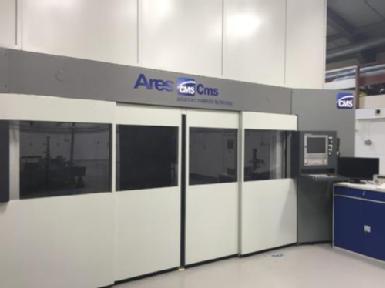
Challenge – Making digital work in a traditional business
Whilst Alphateq has a long heritage in patternmaking, managing director Brian GarforthLink opens in a new window recognised that digital technology was going to play an ever more meaningful role in the future development of the company. Due to their clients’ demand for more sophisticated quoting methodologies, Alphateq were looking for a new system that would better capture job times and material cost data to enable a better understanding of their individual project breakeven and profitability levels, ultimately to improve their competitive positioning.
Their job flow process was largely paper based which resulted in a great deal of time being dedicated to project management to stop the accumulation of jobs at one station. By implementing digital manufacturing techniques there was scope to develop a more efficient process, to free up management time for higher value-added activities and to identify where true costs were being absorbed.
Solution – Reach out and look for new skills.
Alphateq were advised to install an ERP system as a solution to their digital transformation and process optimisation. However, they needed an internal champion to implement the system and via their independent marketing advisor Carl Jarvis, they discovered the WMG Interns for Manufacturing Businesses scheme. Through the scheme they appointed Shantnu Mehta, an Engineering Business Management graduate from the University of Warwick who had experience in systems integration. Shantnu was supervised by WMG engineer Manikanta RaviLink opens in a new window who provided additional guidance and technical support.
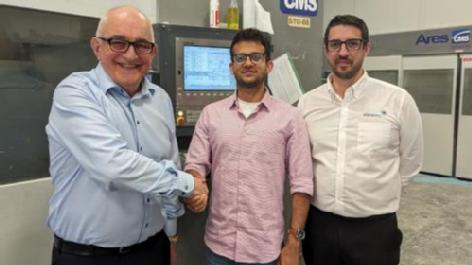
Reinforced by a carefully crafted programme of training, with some reconfiguration and a series of trials and pilots, Shantnu successfully implemented the ERP system as the main SFDC (Shop Floor Data Capture) system to keep track of all the jobs. He trained each Alphateq team member on the system, including how to input data on tablets, and delivered a series of briefings to the management team. The ERP’s digital Kanban board was established to visualise, in real-time, all the jobs and the respective stations and operators assigned to each job. This helps the managers track the jobs on the shopfloor and allows the assignment of new jobs to the operator, machine, and station. Once all the jobs are finished, the analytics for time and cost taken to produce them is created which displays the profit or loss made on that job, providing valuable data to feed into the quotation process.
Impact – Increased control, profitability, and new role created.
- As a result of the new system everyone in the company has enjoyed more transparency on what is happening out on the shop floor, which should boost productivity by 15%
- Shantnu has been offered a permanent position at Alphateq as a Manufacturing Systems Engineer to manage that valuable data flow through production, planning, budgeting, and resource allocation into the marketing and business development process.
- With better costing data now, Alphateq aims to increase their client conversation rate by 10% this year which could result in additional turnover of £250,000
- The reduction of paper at the business has boosted their green credentials and the ERP system will provide them with the opportunity to better optimise machine usage, leading to reduced energy costs

“The successful delivery of this project by Shantnu provides an important step change for Alphateq on their digital growth journey. Importantly by recruiting Shantnu they can continue to make changes and transform further.”
Manikanta Ravi, WMG, University of Warwick
“Working with WMG’s Intern programme has been such a fruitful process, we couldn’t have asked for anymore. Their support in posting the job ad, coupled with their handling of the candidate shortlist and shared interview process made the whole journey run nice and smoothly. Having finally settled on Shantnu, as our ideal intern, we were delighted with the whole outcome. At the end of his 3-month Internship and having added such a great deal of value to this project, and our business, we had no hesitation in offering Shantnu a full-time position with us.”
Brian Garforth, Managing Director, Alphateq Ltd
“This internship helped me understand the practical side of manufacturing business and processes. I had experience of working with digital transformation technologies in the automotive industry but from this internship, I now have experience of digital transformation in a manufacturing environment as well.”
Shantnu Mehta, Intern, WMG


WMG validates the UK’s fastest 3D Printer as part of their SME support programme
“There is no denying that this printer is “rapid”. Against the competitors we looked at, it is the fastest printer in the UK. Speed wasn’t its only revelation; from the outset it was easy to use with basic engineering knowledge of 3D print functions and deserves the time of all Material Extrusion printer users, from hobby to industrial implementers.”
Neil Jefree, Innovation Manager, WMGLink opens in a new window
Background – Young engineer spots a gap in the 3D printing market
CONSTRUCT3DLink opens in a new window is an innovative new start-up business founded by mother and son team Therese and Jacob Lord.
After receiving a 3D printer for his 18th birthday and finding that it didn’t step up to his requirements, young engineer Jacob Lord decided to take it apart, update it himself and experiment with it, printing hundreds of different items. With a background in physics, mechanical and electrical engineering, as well as a degree in computer games design, Jacob went on to develop his own 3D printer now known as the Construct1 with a Construct1XL model for larger build volume.
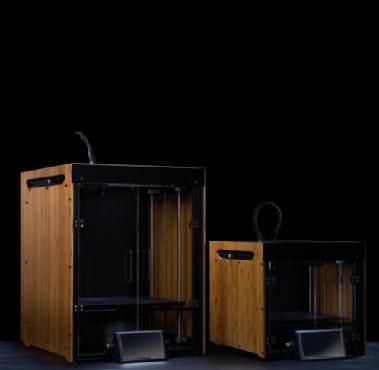
The printer has a very sophisticated aesthetic with protected design features. Its speed is what really sets it apart, it can print at a rate of 320mm per second while maintaining quality and high resolution in builds. Key influencers and 3D printing experts[1] have been wowed by its performance and the company have been involved in high-profile videos to showcase the products.
Challenge – How to make an innovative product a commercial reality
CONSTRUCT3D has had a mammoth six-year journey to arrive where it is today. The family trio had taken a highly innovative idea through research and development, prototyping, and market testing.
After a successful project 3D printing headbands for much needed PPE equipment during the Covid pandemic, CONSTRUCT3D were starting to get serious enquiries from individuals and companies wanting to buy their machines. However, to boost credibility and marketing opportunities they required some crucial third-party validation.
They needed to independently verify the speed of the Construct1 and needed help with Electromagnetic Compatibility (EMC) testing which was essential for them to meet market standards and to start selling the products. EMC testing is a critical step in the design and manufacturing processes of electronic devices. There are EMC regulations to ensure reliability and safety.
Solution – Networking is key to unlocking opportunities
At last year’s TCT 3sixty show, CONSTRUCT3D took a stand and were bowled over by the response to the printer. Meeting a range of important voices in the industry, they were introduced to Dr Kylash Makenji, leader of WMG’s support for SMEs in manufacturing technologies. He suggested that WMG carry out the testing the team needed through their funded Digital Innovation for Manufacturing programme, part funded by the EU and the WMG centre High Value Manufacturing Catapult.
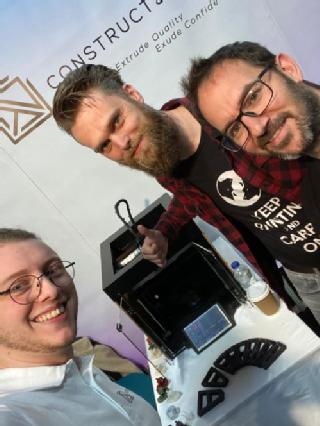
Independent trials verify speed and performance
CONSTRUCT3D’s Therese and Jacob brought the printer over to WMG where Neil Jefree, an Additive Layer Manufacturing (ALM) specialist at the department was initially very impressed. He remarks:
“On the face of it, the printer looked extremely fast, and I was excited to see how it fared against some of the top competitors in the Material Extrusion 3D Printing space[2]. We conducted a product review alongside the current market leaders, printing standardised parts such as “Benchy Boats” which is a known standard for benchmarking printers and capabilities followed by ASTM D638 “Dog Bones”, another standard used for rapidly measuring a material’s tensile strength using time trials and tensile test analysis. We also reviewed the product as a development user and undertook cost comparisons.”
The results were striking:
- The tests showed that the Construct1 was printing one Benchy Boat every 26 minutes and 8 seconds, which is 5 times faster on average than its closest rivals. In terms of accelerations, the machine can print up to 18,000 mm/s^2, 40mm^3/s volumetric melt rate {OR} 40 cubic mm/s flow.*
- It was found that even at such speeds, there was no compromise in terms of the materials’ abilities to be used for their relative applications.
- It was also noted that the velocity and uniform cooling of the print head clearly enabled higher angles to be printed without support, reducing further print time and waste materials. This is an incredibly positive finding in a market that is on a quest to reduce its carbon footprint and create more affordable options for home construction.
Testing covered a wide range of printers, from domestic printers to heavy industry printers, across a price range of £150 - £150,000. The study found extremely impressive results when looking at the strength and quality of parts printed on the Construct1 in comparison with the most expensive heavy industry printers.
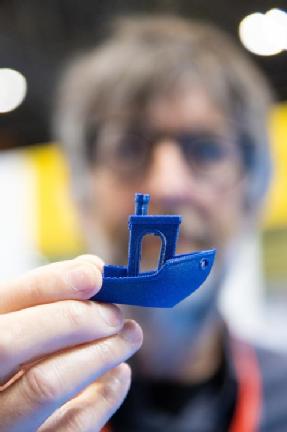
With the team happy with the findings, WMG's Dr David Norman went on to conduct the all-important EMC testing using WMG’s EMC lab which would give CONSTRUCT3D the credibility that its product was fit for purpose and safe to use in an industrial setting.
Impact
- Following the EMC testing the Construct1 was safely taken to market and the company secured £25,000 via a successful Kickstarter campaign
- The benchmarking study has allowed CONSTRUCT3D to confidently promote the high speed of the printer and kick start marketing activity on a bigger scale
- The company has gone on to secure a Research and Technology Organisation (RTO) grant to set up their factory and production processes and the printers have now gone into production at the company’s Lincoln based factory
- They are collaborating with WMG’s CiMAT (Centre for Imaging, Metrology and Additive Technologies) to examine the effects of printing filament at speed
- Additional R&D work is also underway looking at the properties of materials printed on the machine which appear to be changing because of the speed of prints, reflecting the properties of materials manufactured using other manufacturing techniques. This could be a fascinating discovery and could provide further benefits of 3D printing in industry
“The work carried out by WMG has helped us take our printers to the next level. Thanks to WMG’s testing, we can now confidently say our printer is exceptional in terms of reliability, useability, and speed; we are reassured and ready to compete on a global level. I also cannot emphasise enough how vital David’s help with the EMC testing was in giving us credibility and ensuring we met all relevant industrial standards.”
Therese Lord, Director, CONSTRUCT3DLink opens in a new window
“It has been great to work on a product with such potential to shake up a market and make 3D printing at speed a cost friendly option for a range of different organisations and individuals.”
David Norman, Technology Transfer Engineer, WMG
*The team have since updated the model which is now printing benchy boats at around 23 minutes, offering further speed without compromising the quality or accuracy
For more information about WMG’s support for SMEs visit:
For more information about WMG’s research capabilities in ALM visit:
https://warwick.ac.uk/wmg/research/materials/alm/about
[1] https://construct-3d.com/about-us/
[2] https://www.sciencedirect.com/topics/engineering/material-extrusion


Waste heat recovery project boosts NET Zero credentials for Kingfisher Enamelling
WMG works with Midlands manufacturer Kingfisher Enamelling to reduce its energy consumption, remove reliance on natural gas within the factory, and meet its Net Zero targets within scope 1 emissions.
Company Background
West Midlands based Kingfisher EnamellingLink opens in a new window specialises in the vitreous enamelling of cast iron and steel components. The core of their business lies in enamelling Rayburn cookers but extends to other products such as woodburning stoves, bathroom products, and even vintage automobile restoration.
The Challenge
On a mission to reduce costs and emissions in the business, Kingfisher approached WMG with the aim to determine if wasted heat could be recovered from their furnace used in the enamelling process for reuse in various other parts of the business. They had noticed that when the doors of the furnace were opened, heat escaping was burning the roof panels above. This really got them thinking about the potential of it being channelled elsewhere, with more productive results!
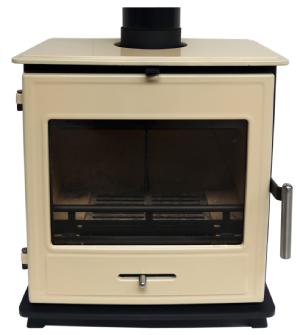
The Solution
Sustainable manufacturing innovation manager Laura DowneyLink opens in a new window and WMG engineer Jack DaviesLink opens in a new window undertook a feasibility study using simulation techniques to model the current and future state of the furnace room with a view to creating a business case for recovering waste heat from the furnace to be redirected to the drying rooms.
Step 1 Gather Data
Laura and Jack made a site visit to start collecting the vital data that would create meaningful and robust simulations. Ultimately, they needed to see if there was enough available thermal energy from the furnace waste to heat the drying rooms rather than using the current gas heaters. They measured room dimensions and monitored room temperatures to calculate how much thermal energy was needed in the drying rooms. The also investigated if the heat could be released and rediverted again.
Step 2 Work out how the heat can be diverted
The team then went on to examine how the heat could be diverted from cooling parts and the furnace door using a combination of hoods and fans to the drying rooms. Once initial simulations were completed another phase of thermal simulations was carried out looking at different venting and insulation options for the drying room as well as material choices and dimensions of equipment for a hood and extraction system in the furnace to capture the heat.

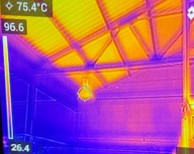
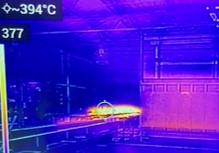
Step 3 Measure the Impact
Through the simulations a business case was made to validate that the furnace waste heat could be used to heat the three drying rooms on the shop floor and a system design was created that would keep the drying room at the optimum 35°C.
It was established that once implemented, Kingfisher could save:
- 23,000-115,000 kWh in energy usage
- Up to £11.5 k in energy costs
- 4,600-23,000 kgCO2 per year (which equates to driving at least once around the world in a petrol car)
Most importantly, the project helped to reduce energy consumption and remove reliance on natural gas within the factory.
“WMG staff provide a range of knowledge and expertise which we just did not have. Added to this, their drive and commitment to help SMEs is immeasurable.”
Leslie Sharp, Director, Kingfisher Enamelling
“This project is a blueprint for how manufacturers can take wasted heat and reuse it in other areas of the business. It has been a delight to support Kingfisher Enamelling with this project. We offer practical support to get SME manufacturers up and running on their journey to Net Zero.”
Laura Downey, Sustainable Manufacturing Innovation Manager, WMG
For more information on working with WMG, please email wmgsme at warwick dot ac dot uk


MyWorkwear - Looking good for the future
“In the last couple of months, we have almost doubled our output compared to 18-24 months ago and we can all see the benefits of the new system compared to our old processes. Our turnaround time has been reduced significantly and there are fewer mistakes to be corrected which is another bonus.”
Ben Simpson, Co-Managing Director, MyWorkwearLink opens in a new window
Challenge
Under the leadership of Managing Directors Ben Simpson and James Worthington, MyWorkwearLink opens in a new window, which was started in 1976, produces thousands of garments every week for companies large and small across the UK. Using state-of-the-art embroidery and print machines, the company adds logos, names and designs onto uniforms, workwear, teamwear, promotional items and other garments. The business also supplies PPE and non-personalised clothing from its 6,500 sq ft premises to its customers predominantly in the Midlands and nationwide.
MyWorkwear was growing rapidly and needed its internal systems to reflect the upsurge in orders.
Ben Simpson, Co-Managing Director, said: “Our systems were starting to struggle because we still had processes in place from a long time ago.”
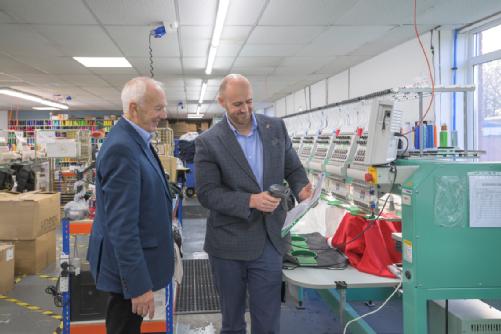
Solution
Working with partners at Made Smarter West Midlands, colleagues at WMG undertook a digital roadmap which led MyWorkwear to buy a specialist ERP system and software that involves the embroidery machines – which embroider many garments simultaneously – ‘talking’ to a central piece of software. It also enables staff to complete the colourisation and bar code scanning on the garments.
“The comprehensive digital roadmap that we carried out for the business highlighted areas which we felt would improve their productivity. We are delighted to have played a part in improving the digitalisation of MyWorkwear which is already leading to efficiencies, and they are a great example for other West Midlands businesses to follow.”
Onur Eren, Chief Engineer, WMGLink opens in a new window
Impact
Read more here about the project and the results here.Link opens in a new window
For more information about working with WMG's SME Group email wmgsme@warwick.ac.uk

Rise in productivity expected at doughnut bakery after Made Smarter support
“The digital roadmap we produced for Planet Doughnut will help the business follow clear steps to best utilise its MRP system. We hope it helps Planet Doughnut improve its productivity and enables the business to grow even faster.”
Onur Eren, Chief Engineer, WMGLink opens in a new window
Planet DoughnutLink opens in a new window was founded by husband-and-wife Duncan and Samantha McGregor in 2017 out of their garage in Shrewsbury, selling a wide range of doughnuts, waffles, milkshakes and more.
It now has 90 employees across its bakery and nine shops, selling directly to the public and through stockists such as Tottenham Hotspur FC. However, inefficiency when it came to processes such as invoicing and daily planning began to hold it back as it grew.
Working with partners at Made Smarter West Midlands we undertook a digital roadmap and recommended that Planet Doughnut implement a bakery specific Manufacturing Resource Planning (MRP) system. The company opted for Cybake Bakery Software .
Duncan McGregorLink opens in a new window founder of Planet Doughnut said:
“Cybake ticked all the boxes for us – it not only integrates all our admin but has extra features such as recipe management which allows us to order ingredients more precisely to produce less waste. It also supports our wholesale and retail operations.”
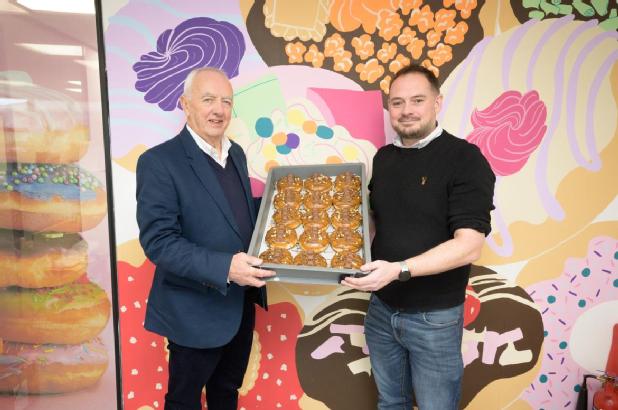
Read more here about the project and the results here.Link opens in a new window
For more information about working with WMG's SME Group email wmgsme@warwick.ac.uk

Impression Technologies meets data demand to ensure future success
“We know how stretched for time SME manufacturers are, so by having their data all in the right place, it can save so much stress later down the line.”
Onur Eren, Chief Engineer, WMGLink opens in a new window
Impression Technologies (ITL)Link opens in a new window is an innovative advanced aluminium light weighting technology business in Coventry. Established in 2012, ITL is renowned for developing Hot Form Quench (HFQ®) technology, which delivers complex aluminium parts and maximises strength whilst reducing weight.
They worked with WMG through the Made Smarter West Midlands scheme, which launched a £1.9 million digital adoption push to drive growth in West Midlands manufacturing and engineering SMEs in June 2021.
They wanted to improve the process data collection at their facilities by automating data collection and implementing a traceability system. This will allow them to record process history data for each part produced in a centralised platform. Automating the way data is collected and analysed will also allow them to push the technology forward for the commercialisation of future products.
Members of our SME group undertook a digital roadmap to review the best technology to automate this process, concluding that installing part marking and barcode readers would be most effective. These solutions, integrated with a new PLC unit, enables data collection from multiple machines.

Read more here about the projects and the results here:Link opens in a new window
For more information about working with WMG's SME Group email wmgsme@warwick.ac.uk

Manufacturer expands horizons with new scanning tech
"We were really happy with the work WMG did for us. We have already secured two new customers for scanning work and the process now takes a fraction of the time it did previously. It has opened up a lot of new opportunities for us."
Ian Heaford, Owner & Director, Woodhall Products Limited
Company Background
Woodhall Products Limited based in Dudley has a heritage as an established toolmaker, press shop, machining, and welding business. They have clients in a range of sectors including construction, telecoms, food and transport sectors and export products to Denmark, Southern Ireland, and France.
The Challenge
With big plans to double the size of the firm over the next three years, they had already pushed the boundaries by investing in 3D printing capabilities. This was proving successful, allowing them to access valuable new markets such as manufacturers for 3D printed tooling and art exhibitors for legacy product 3D printing. A big emerging market that they had identified was to re-create legacy parts for collectors and art enthusiasts, old car models for example or replicas of collector items from vintage films. They have their own product range and continue to develop their own products.
However, they knew that there was the potential to add even more value to existing processes and were investigating if it was viable to procure scanning facilities to bolster their offering in concept design, prototyping and low volume manufacturing. They needed some additional expertise in scanning technology and contacted WMG for guidance.
The Solution
WMG’s Deeksha Sampath met with Ian Heaford at Woodhall to find out more about their requirements. Investing in a scanner would allow Woodhall to generate polygon mesh files and get more precise data to create CAD or amend designs for clients. This would close the loop, giving them an enhanced product development offering and generate additional turnover.
Deeksha conducted a technology and research review of the best scanner offerings available to Woodhall for their budget and specification, thinking about the potential clients and existing processes in the business. She visited potential suppliers on behalf of Woodhall to get more detailed information and to make a full assessment.
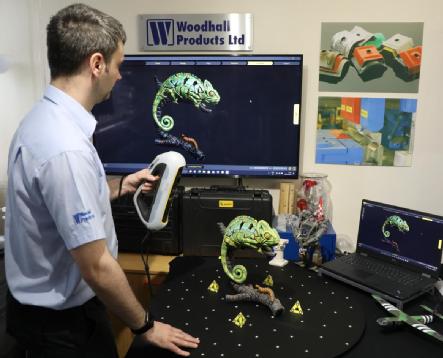
The Impact
- Deeksha presented a report of her findings with recommendations for the most suitable manufacturer and model scanner for Woodhall which de-risked the decision to invest
- Using the report, Woodhall were able to secure funding to support 50% of the cost of the new scanner
- The new capability will allow Woodhall to secure more work (£195,000 over 3 years), increase productivity, export further overseas, and create new jobs
- Parts and products through scanning can now be Reverse Engineered
- The project has helped to futureproof the business, with more flexible solutions to offer clients
“It was a delight to work with Ian and the team to help them diversify their offer and grow the business. Woodhall is a great example of a company that has remained agile and identified opportunities to add value to existing client offers to secure their future.”
Deeksha Sampath, Engineer, WMG, University of WarwickLink opens in a new window
For more information on working with WMG, please email wmgsme at warwick dot ac dot uk


Brandauer reduces its packaging emissions by 60% on its journey to Net Zero
“We were extremely happy with the work that was undertaken with Archit and the team at WMG, which opened our eyes to ways of reducing our carbon footprint in a cost-effective way. This has allowed us to further develop our front-end processes to change the way jobs are quoted, putting more emphasis on the impact process materials have on the environment.”
Adam Burgoyne, Operations Lead, Brandauer Ltd
Getting started on the pathway to Net Zero
There are many ways for a business to get onboard with the Net Zero mission. However, knowing where to start can be tricky. Precision stamping and tooling firm Brandauer Link opens in a new windowwere keen to understand how they could reduce emissions in their day-to-day activity but needed guidance. Through their existing partnership activity with WMG they heard about the Net Zero Innovation Network.
The Net Zero Innovation Network (NZIN) is a WMG initiative that brings together groups of SMEs with a larger manufacturing organisation and a member of the WMG SME group to work on Net Zero challenges. Brandauer were part of a cohort with other Midlands manufacturers Goodfish Group, Plastic Coatings Ltd, and Alucast Ltd. Swedish electric car manufacturer Polestar joined up to give the large business perspective in terms of their Net Zero mission and supply chain objectives.
After a series of collaborative workshops with expert speakers and a Net Zero Readiness Assessment to benchmark their current Net Zero position across the business, Brandauer decided that an area to target with a specific project was packaging.
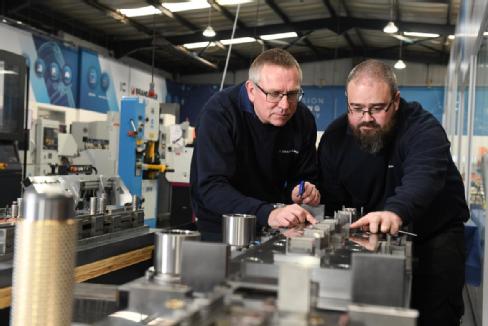
Step 1: Identify emissions associated with packaging in the business
The Department for Environment, Food and Rural Affairs (Defra) have recently published guidance to encourage more responsible behaviour when it comes to packaging goods, and they have a database that can support manufacturers to work out their packaging emissions.
Brandauer were concerned by the amount of single-use packaging materials they were using for clients. They wanted to get a better understanding of the carbon footprint and costs of their packaging materials. Furthermore, they wanted to know where their emission hotspots were, and how they could tackle them.
With agreement from Brandauer, WMG's Archit TamboliLink opens in a new window mapped the packaging system for a major overseas client that was most typical of packaging systems across the business. It involved identifying the individual components and inventory that made up a packaging system and calculating the greenhouse gas emissions in terms of the CO2 equivalent (CO2e*) in kilograms per pallet. With this information Archit was then able to calculate this figure on an annual basis.
Step 2: Investigate and implement reusable packaging
To minimise the environmental impact of their packaging, Archit suggested that they could use reusable packaging instead of conventional pallets. He identified a range of suppliers in the Birmingham area and outlined the options, grades of materials and prices. The calculations revealed that Brandauer’s packaging emissions across the company could be reduced by 61% (equivalent to 9.5 tonnes of CO2) and costs by 15% by using reusable pallets.
As a result of Archit’s work, Brandauer have now incorporated the option for selecting reusable packaging in the quotation phase for customers. This has led to three new client jobs that exclusively use re-useable packaging in trays. It is likely that more clients will choose this option in the future leading to a reduction in costs and environmental impact.
Step 3: Refurbish your own old packaging to reduce emissions further.
Since the project has been completed, Brandauer are refurbishing nearly all the pallets they use internally with timber they store and are looking to roll this option out to customers. This option has the potential to save even more costs and emissions.
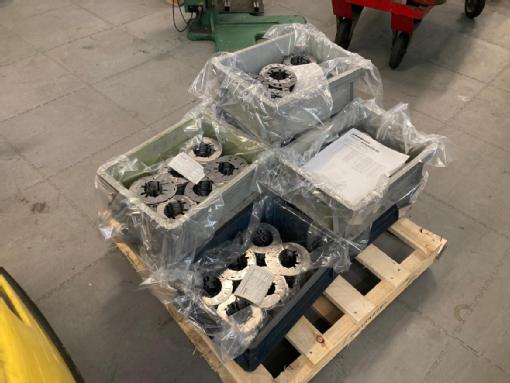
“The work we have done with Brandauer on their NET Zero journey so far has highlighted how small changes in the business can make a significant impact on the reduction of emissions and costs. As reusable packaging rolls out to more Brandauer clients, there is an opportunity to make an even bigger environmental impact.”
Archit Tamboli, Technology Transfer Engineer, WMG
*CO2e is a metric measure that is used to compare emissions from various greenhouse gases based on their GWP (global warming potential) by converting amounts of other gases to the equivalent amount of CO2.
For more information on working with WMG, please email wmgsme at warwick dot ac dot uk


ActOn Finishing drives forward future innovation
“Everything now is automated which is a really big help since we can access the information we need at the press of a button instead of going through sheets and sheets of paper and the new system will keep up with growth in our manufacturing division.”
Sid Gulati, Managing Director, ActOn FinishingLink opens in a new window
ActOn FinishingLink opens in a new window has grown steadily since it was established in 1965 from its base in Torrington Avenue in Coventry. In 2020, the business modernised its laboratory which is used to demonstrate products to clients. Over thirty people work at the family-owned business which specialises in providing surface finishing solutions which include manufacturing a range of machines for a variety of applications and industries – including finishing medical implants, aerospace components and cutlery.
ActOn Finishing wanted to introduce state-of-the-art manufacturing software to keep track of its orders which are sent around the world from its Coventry base.
Members of our SME Group worked with ActOn on a digital roadmap which helped the company decide which Enterprise Resource Planning (ERP) system to invest in. Following this work, the company also deployed a Solidworks PDM software to streamline information flow from their design office to the production shopfloor.
Read more about the project and the results here.Link opens in a new window
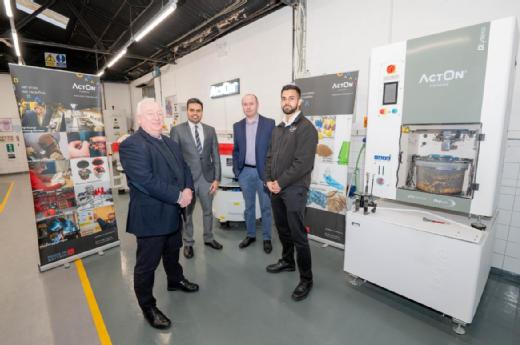
For more information about working with WMG's SME Group email wmgsme@warwick.ac.uk
Read more information about Made Smarter West Midlands here.Link opens in a new window

The Manufacturing Assembly Network partners with WMG to implement digital technology through Made Smarter West Midlands
“We helped to generate fantastic commercial research for members of the MAN group as well as create new products that will make a real difference to the UK’s economy.” Onur Eren, Chief Engineer, WMGLink opens in a new window
The Manufacturing Assembly Network (MAN)Link opens in a new window is a collaboration of manufacturing companies based in the Midlands and Stevenage that share technical excellence in mechanical, electrical, and electronic engineering processes. Their services include aluminium casting, CNC and conventional machining, contracts electronics manufacturing, electrical and electronics assemblies, engineering supplies, fluid power, forging, industrial design, metal stamping, plastic injection moulding, and tube bending and manipulation.
Four of the MAN members approached WMG after hearing about our involvement with the Made Smarter West Midlands scheme, which launched a £1.9 million digital adoption push to drive growth in West Midlands manufacturing and engineering SMEs in June 2021. They each had a desire to embed more digital technology into their organisations.
James Lister & Sons, which has branches throughout the West Midlands and South Wales, wanted to explore R&D in 3D printing to offer a new service for its customers. Alucast in Wednesbury, an award-winning aluminium casting foundry supplying fully machined components wanted to begin their digitisation adventure.
Read more here about the projects and the results here:Link opens in a new window
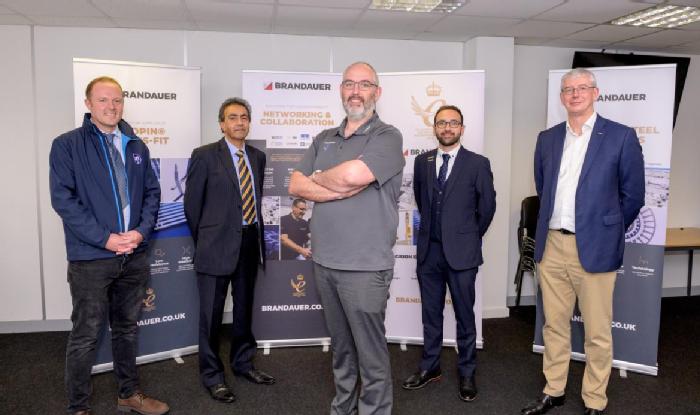
For more information about working with WMG's SME Group email wmgsme@warwick.ac.uk

BEATING the energy crisis – Getting to grips with business data to make big energy savings
With rising energy prices affecting the cost of production, we worked with engineering firm James Lister and Sons Ltd to find out if there were opportunities for cost savings through optimisation of existing equipment or a business case for new equipment investment to replace older, potentially less energy efficient machines.
Company Background
James Lister and Sons Ltd is an engineering services supplies company that turns over £15 million. It was founded in 1874 and has its head office in Smethwick but operates from six locations in the Midlands and south Wales, employing 100 people.
Having engaged with WMG to embed new 3D printing technology at the end of 2022, the Listertube division which manipulates metal tubes used in hydraulics, heating appliances and exercise equipment, approached WMG to collaborate again as the energy crisis began to take hold. They expect energy costs to rise from £16,000 to £32,000 per year from October once their fixed rate tariff ends and so wanted to minimise the potential impact.
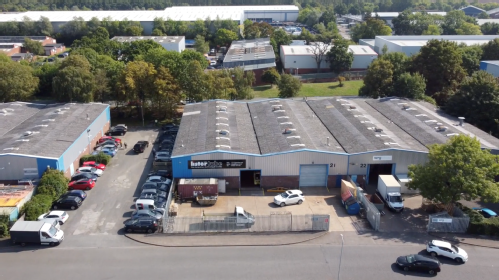
Challenge - How do manufacturers identify energy reduction opportunities?
Like many other manufacturers across the UK, the rising energy prices were impacting production costs and reducing their bottom-line returns. They decided to join our Net Zero Innovation Cohort which brings together groups of businesses to discuss issues relating to energy costs, emissions and the UK’s NetZero ambitions[1]. They were part of Cohort 4 alongside fellow MAN Group companies - PP Automation & Control, Barkley Plastics and Grove Design.
After participating in a series of collaborative workshops and a benchmarking exercise to review their current Net Zero position across the business, the company met with WMG’s Marcelle Batson WarnerLink opens in a new window to discuss a project. They wanted to find out where they were consuming the most energy and how they could reduce it.
Marcelle suggested carrying out an Energy Value Stream Map (e-VSM), which would identify:
- a) If process optimisation could save energy
- b) If planning production orders in a different sequence or by using alternative machines could make a difference
- c) If there was a business case for buying new equipment
Like a traditional value stream map[2], it would identify areas where there was potential to reduce waste and capture value and be more efficient with an energy perspective mindset.
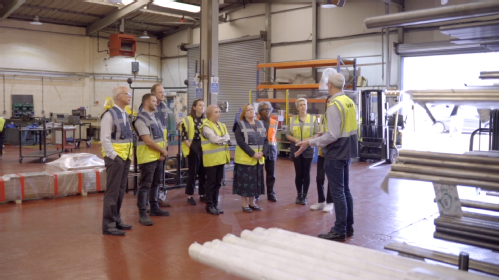
Solution - Let’s talk about data.
A critical part of this project was having the all-important conversation about data. Even before visiting the site, Marcelle asked Listertube about how they were going to get the information to carry out the e-VSM. It was agreed that they would use the existing MRP system and manually collect the data via pen and paper. Listertube’s IT team subsequently developed an app to help track usage and speed up this process.
The next step was to define the baseline power consumption for assets. A series of low-cost current clamp sensors, recommended by WMG were fitted onto equipment to collect energy usage data.
The data collected enabled Listertube to review which machines used the most energy, and at what time, to generate a cost per KW/hour. By identifying which assets consumed the most, and what products they made via what process, we could analyse if it was possible to switch production from one asset to another to save energy. We then went on to present a technical report containing the findings, making a series of recommendations for how they could save costs.
Impact - Updating and upgrading equipment can make a difference.
- We identified that by turning off machines when not in use, Listertube could save around 15% in energy costs across the production facility. They had previously been worried that turning off older machines would create power surges so had avoided it.
- Based on the scenarios created using the energy calculator, we identified that prioritising one machine over the other to create the product could result in an 82% energy saving on some individual machines
- Listertube invested in a new all electric rather than hydraulic machine to replace the highest energy using machine which should draw between a sixth and a tenth of the previous energy usage. They also installed a rapid action door preventing warm air escaping when forklift trucks go in and out of the factory.
- Overall following the project completion, Listertube expect to save up to £6,000 based on future predicted costs, approximately 19% of energy expenditure.
Listertube are one of 13 businesses who have now taken part in the Manufacturing Energy Toolkit (MET) scheme which we launched earlier this year. Click here for more information about how your business can benefit.Link opens in a new window
[1] https://www.gov.uk/government/publications/net-zero-strategy
[2] https://www.lean.org/lexicon-terms/value-stream-mapping/
For more information on working with WMG, please email wmgsme at warwick dot ac dot uk


In-depth sustainability study on Aviemore manufacturing site highlights opportunities for change
The journey to Net Zero[1] is not easy for manufacturing businesses. There is pressure to look at processes, raw material content and waste management in terms of impact on the environment. Through WMG’s internship scheme, international firm Hydrasun tackled this, uncovering a wealth of insight that could drive real change not only for them but across the entire supply chain.
Challenge - How to map a site’s carbon footprint?
HydrasunLink opens in a new window is a leading specialist provider of integrated fluid transfer, power, and control solutions to the oil and gas, renewable energy, OEM, marine, and defence industries worldwide. They were keen to research their overall carbon footprint for the Precision Manufacturing Division based in Aviemore, Scotland. The Division is the centre of excellence for precision manufacturing to the Hydrasun group and provides a range of high quality bespoke and Hydrasun brand products. They knew that the global rate of resource consumption was not sustainable and that they had a social responsibility to step up and start making changes. They were looking to achieve, in the long term a net zero manufacturing position. Starting this process earlier on would cement their reputation with clients and give them the opportunity to share best practice across the sector.
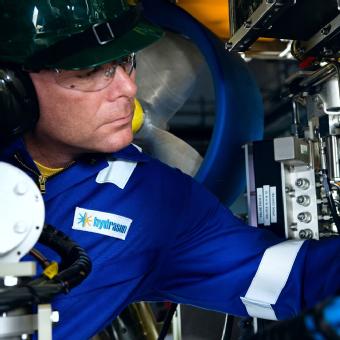
Solution – Recruit a skilled intern.
Through a supplier who are undertaking a Knowledge Transfer PartnershipLink opens in a new window with WMG, Hydrasun heard about our expertise in process manufacturing and sustainability and got in touch with Dr Paul Lansdell. Paul suggested that WMG could support Hydrasun map their Aviemore manufacturing site’s carbon footprint through their internship schemeLink opens in a new window. A recent graduate or undergraduate would conduct the data gathering and analysis and Paul would supervise and share his knowledge.
Declan Kelly, a graduate in Chemical and Process Engineering at Strathclyde University joined Hydrasun with a BIG remit. Over 12 weeks he was assigned to:
- Examine the overall carbon footprint of the supply chain in terms of production and transport through collaboration with suppliers.
- Assess the efficiency of the conversion processes at the Aviemore site, looking at the rate of input versus waste and finished product output.
- Map the scrap recycling routes in terms of their carbon footprint and identify any issues.
He was not intimidated by the task saying: “This gave me the chance to explore exactly what is involved in a manufacturing organisation and how sustainability issues can be identified and resolved.”
Declan spent time engaging with key suppliers and traced materials from the place of origin and along the route of supply. He weighed all outgoing products over a month and undertook analysis to determine the alloy and form of the raw materials used in Hydrasun’s production processes. Through existing systems, he was also able to determine and quantify the waste product. He visited the company’s main waste management partner and looked at the company’s current recycling routes and methods.
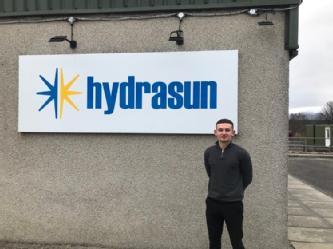
Findings and next steps
- Declan discovered that approximately ¼ of emissions identified in the supply of raw materials to Hydrasun was attributable to material transport. With investment in new technology such as AI to optimise schedules and transport routes there is potential to reduce this significantly.
- Declan’s work highlighted to the company that there was considerably more material wastage during the manufacturing process than was initially believed. There is huge potential here for Hydrasun to optimise the processes, re-design products, and switch metal forms to reduce wastage.
- Declan made some suggestions for how Hydrasun could improve their recycling processes and management of SWARF and highlighted the importance of separating out valuable alloys.
Don Morrison, Divisional Manager - Precision ManufacturingLink opens in a new window said:
“This internship was truly eye opening for us. Declan highlighted that there is work to do on our sustainability mission. We have a commitment to our clients and the wider public to be more responsible and are wholeheartedly looking forward to actively pursuing collaboration with upstream and downstream business partners to drive meaningful change.”
Dr Paul Lansdell, Innovation ManagerLink opens in a new window at WMG said:
“What Declan achieved in the time frame was impressive. The positive thing about a project like this is that if Hydrasun implement Declan’s recommendations, they’ll not only lower resource consumption and waste in the business but decrease costs and enhance profit margins so it really is a win-win situation.”
Declan Kelly, Intern said:
“This project has strengthened my conviction that businesses need to proactively take steps to reduce their impact on the environment. I am really interested in developing a career in sustainability now.”
How to reduce your carbon footprint – a manufacturer’s road to Net Zero
- Step 1 Engage the whole supply chain in your mission, both upstream and downstream partners. Tell them about your plans, they may have similar objectives, and you can work together on your mission. Transportation of goods is a good place to start.
- Step 2 Sort out your data so that you can pull off valuable information about production efficiency. It is likely existing MRP or ERP systems can be optimised to help you do this.
- Step 3 Do some analysis on your raw materials, looking at their properties and strength. Perhaps you can replace existing materials with others, mix in recyclable materials, or change the form for better efficiency rates and less carbon intensity.
- Step 4 Do your research on material end of life and waste management. Ensure you are fully aware of the implications on the environment so that you can work with your scrap management partner more effectively.
[1] https://www.gov.uk/government/publications/net-zero-strategyLink opens in a new window
Get in touch to find out how we can help your manufacturing business via wmgsme@warwick.ac.uk


Waste streams to wins - Midlands foundry uncovers potential to reduce core shop waste by 50%
“Circular manufacturing is an essential step in the journey to Net Zero and the work carried out by WMG was the first step in what has become the primary focus of Sarginsons’ strategy: to be the first foundry in the world to have a totally circular supply chain.”
Mark Nunan, Director, Sarginsons Industries Ltd
Challenge – How to minimise waste and reduce emissions
Coventry based SarginsonsLink opens in a new window are a leading European aluminium foundry that design and produce complex aluminium castings for light weighting in the automotive sector as well as for rail, oil and gas, and wind energy applications. Currently working with WMG on a suite of different projects including an internship to look at optimal melting processesLink opens in a new window and a project to recover heat from their industrial processesLink opens in a new window, they were keen to explore how they could minimise waste and carbon emissions in the business. They needed help to work out why only 53% of the 280 tonnes of silica sand they purchased each year was contributing to the production of usable cores[1] and why the rest was not being utilised. Any sand not used went to landfill. This was a huge material loss stream for them.
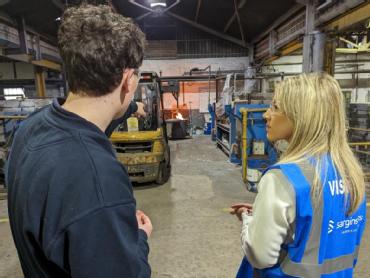
Solution - Collaboration is key to understanding
Sarginsons signed up to a WMG Net Zero Innovation cohort which is designed specifically to help manufacturers decrease carbon emissions in the business, while saving costs and identifying new opportunities. It involved joining a group of other likeminded manufacturers including Summit Patternmaking, Impression Technologies, and KS Composites to share ideas and challenges on their individual Net Zero journeys.
After a series of collaborative workshops with expert speakers and a Net Zero Readiness Assessment to benchmark their current Net Zero position across the business, they were ready to make a start on the waste reduction project within their onsite core shop.
WMG's Laura DowneyLink opens in a new window first set about helping Sarginsons better understand their material utilisation. It involved measuring and mapping the process from silo to finished core. It was discovered that 133 tonnes of silica sand per year were not being utilised, costing the business over £18,000. Laura also identified the wasted energy costs involved in this process which was around 15000kWh/ £2000.
Laura then went on to make recommendations for how Sarginsons could reduce this waste using the 6R Waste Hierarchy model. Ideas included using digital solutions to monitor equipment, predict and preventative maintenance, and engaging employees to minimise waste more effectively. She suggested that unavoidable waste sand and post processes sand could be used to create construction materials and also presented a business opportunity to reuse and reclaim sand onsite or work with other casting firms to do this collaboratively offsite. As well as saving on the land fill taxes and cost of buying virgin silica sand, thermally reclaimed sand has been shown to provide improvements in casting quality and if used can reduce the need for adding binder to achieve acceptable strengths.
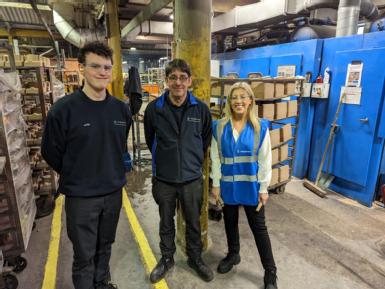
Results - The road to less environmental impact
- By implementing these recommendations, Sarginsons have the potential to boost their environmental credentials which is hugely important as part of their role on the Coventry City Climate Change Board and with their customers and supply chain.
- A 50% reduction in waste in the core shop process will result in significant cost and energy savings and 2.6 tonnes in Co2 equivalent.
“You can’t manage what you don’t measure. Working with Sarginsons to map their waste streams and measure the material utilisation of their core shop highlighted waste hotspots that open the door to exciting opportunities to develop a more circular way of operating.”
Laura Downey, Innovation Manager, WMG
[1] Core making is the process which forms the interior part of a casting. The mold provides a space for the molten metal to go, while the core keeps the metal from filling the entire space.
For more information about WMG's Net Zero Innovation Programme click here


WMG support programmes pave way for major change and new product growth at manufacturing firm Jaltek Systems
A collaboration between WMG at the University of Warwick and Jaltek Systems in Luton has helped the company move into a brand-new state of the art facility and is set to boost Jaltek’s turnover by several million pounds.
JaltekLink opens in a new window worked with WMG via its funded Digital Innovation for Manufacturing (DI4M) programme and have taken on a talented intern full time to make their growth plans a reality. Initially WMG collaborated with Jaltek to review how their existing factory layout could be scaled up in the new facility to meet demand for the company’s growing box build capability. This involves creating a complete electrical assembly service for customers from design, manufacture, and test through to market.
After undertaking analysis on the “current state” of the production process, WMG conducted a laser scan of the existing and new production facility areas using state of the art equipment from their Centre for Imaging, Metrology and Additive Technologies. This enabled Kieran Batchelor of WMG to design an optimal digital 3D version of the “future state” for the new facility that could be customised going forward. Alongside this, a series of recommendations were made including implementing digital visual management in new areas to track build progress, separating out a test area from assembly, and implementing more ergonomically friendly workstation design.
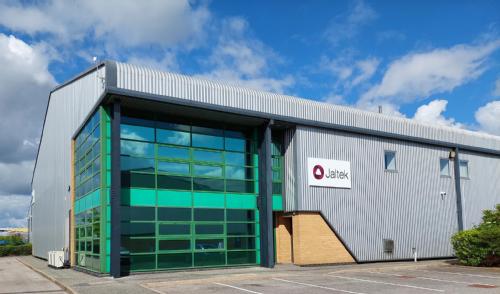
Following this work, Jaltek took on intern Nayan Wani, an International Technology Management postgraduate from the University of Warwick, for 12 weeks on WMG's Internship for Manufacturing Businesses ProgrammeLink opens in a new window to oversee the project management of the new facility to get it up and running to enable the delivery of multi-million programmes with two key clients. Nayan’s role was to implement “lean manufacturing” principles across the new manufacturing cell in terms of the people, the process and the technology used. He liaised with key stakeholders including senior management at Jaltek as well as the customers to ensure the most optimised layout and material flow for the lines. He delivered a project and communication plan which was approved by the customers ready for launch, on time and to expectations.
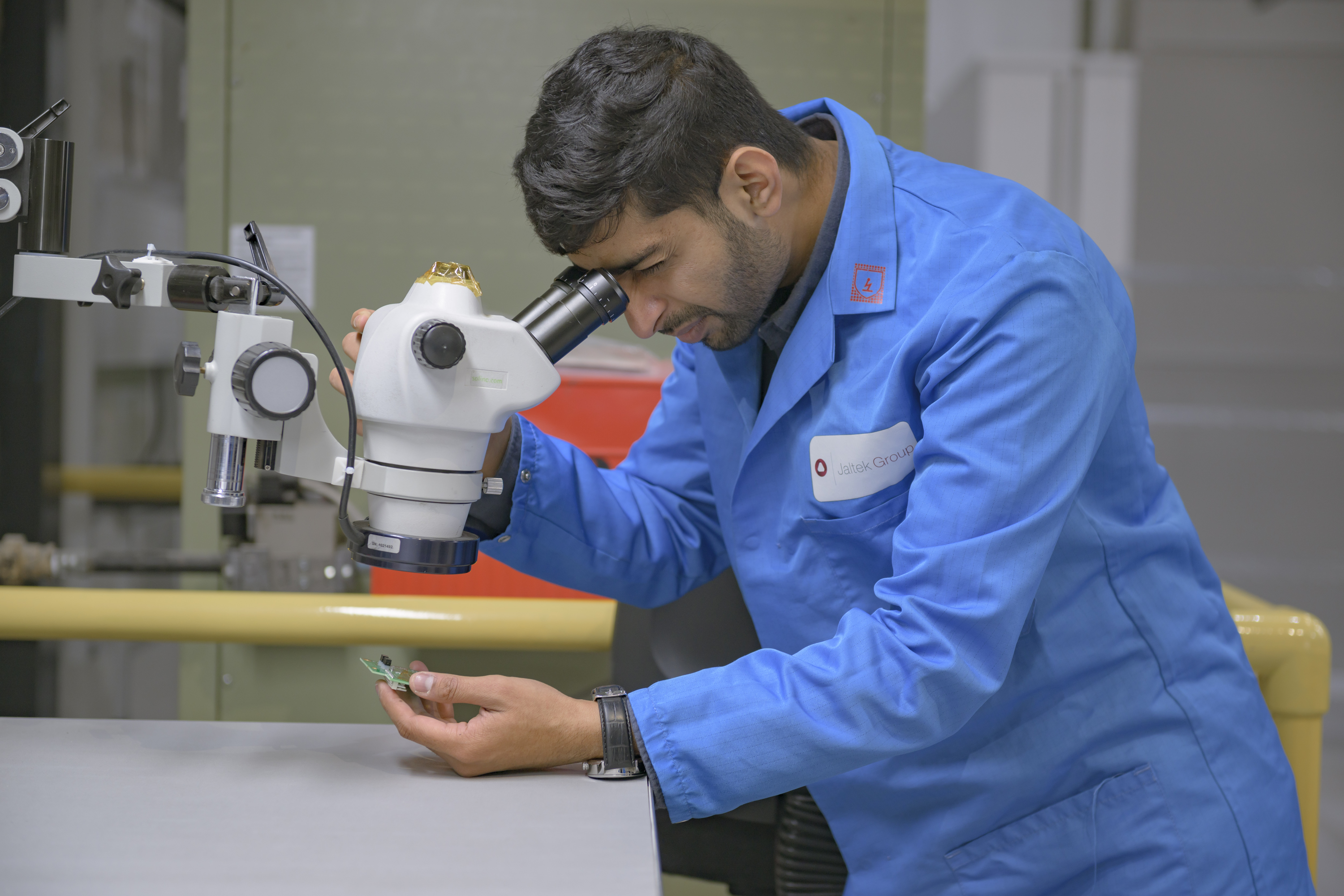
The relationship between Jaltek and WMG has gone from strength to strength, with the partners now embarking on a two-year Knowledge Transfer Partnership (KTP)Link opens in a new window. The KTP will embed cutting edge management techniques into the organisation to allow them to make transformational changes, including launching into new markets and improving operations.
Steven Blythe, Business Manager Link opens in a new windowat Jaltek Systems said:
"We’ve had a really positive experience working with WMG, Nayan did such a great job that he is now working at Jaltek permanently as a continuous improvement engineer and we have subsequently recommended WMG’s digital factory optimisation tools to other businesses."
Dr Mark Swift, WMG's head of SME programmesLink opens in a new window said:
“This collaboration is a perfect example of the depth and breadth of support that is available for dynamic SMEs like Jaltek via WMG thanks to regional funding and our role as a High Value Manufacturing centre Catapult. Working with us de-risks key decision making whether it’s investing in new technology or moving into a new facility. Our knowledge and expertise help SMEs realise new market opportunities and transform production and operations.”
Nayan Wani, intern at Jaltek Systems said:
“Being a project leader helped me gain a plethora of skills including project management, leadership, time management, stakeholder communication, business planning and analysis of workflow. The WMG Internship scheme is a great opportunity for new graduates to understand how manufacturing organisations operate. I am so excited to now be working with Jaltek going forward.”
Find out more about WMG's work with SME manufacturers here.Link opens in a new window


Practical steps to reduce emissions will lead to big savings
Minimising the impact of energy cost hikes is high on the agenda for manufacturing firms across the UK. On the back of this, WMG has stepped up to offer a suite of practical, yet innovative solutions to help these businesses do just that. KS CompositesLink opens in a new window have been one firm to benefit from WMG support.
The Challenge
Melton Mowbray based KS Composites are a specialist in the manufacturer of composite and Glass Reinforced Polymers (GRP), predominantly working in the motorsport industry as well as in the wider automotive sector and other niche areas. They were alarmed by the high energy prices they were having to navigate and were also on a mission to develop more sustainable processes to meet Net Zero targets.
The Solution
KS Composites signed up to join WMG’s Net Zero Innovation Network (NZIN) programme, providing them with the opportunity to attend regular networking events, find out from industry experts about how to be more sustainable, as well as join a cohort with up to five other manufacturing businesses to participate in workshops, implement change, and develop growth strategies. KS looked at their energy consumption across the whole company and were soon able to make a plan for some immediate changes including the replacement of the company van to Electric and monitoring out of hours usage of machines and extractions systems ahead of implementing new processes. They are also currently investigating the installation of solar panels on the factory roof.
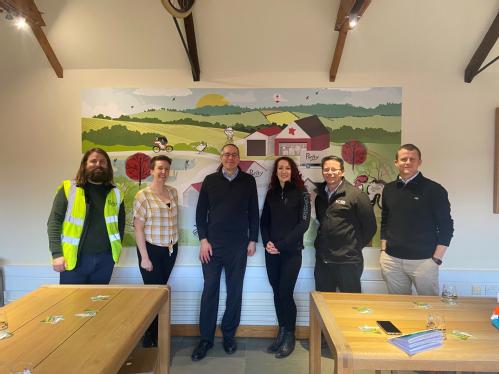
The Impacts
- After being a part of the NZIN programme, KS Composites have determined their emissions across different streams of the company
- They now have a set of tailored tactical actions to reduce their emissions including offering a cycle to work scheme, assistance with a carpooling system, using suggested sustainable alternatives to reduce plastic (lamination) waste, and more efficient shipping schedules
- They now have a roadmap to meet Net Zero targets, aligned with Government guidelines, looking at a whole host of strategic alternatives including a more sustainable supply chain and more environmentally friendly materials which will give them a competitive edge in the future
Archit Tamboli, Technology Transfer Engineer at WMGLink opens in a new window said:
“This project is a great example of how with the right technology and metrics, a business can transform its operations to become greener, leaner, and fit for the future industrial landscape. KS Composites are now in the position to save costs and feel more secure about their ability to navigate these challenging times. We have thoroughly enjoyed working with them.”
Alastair Trimmer, R&D Manager at KS Composites LtdLink opens in a new window said:
“As a company it was always our intention to become more sustainable, but it was a daunting prospect. The support from WMG to guide us in this challenge was invaluable. The NZIN programme put us on track and the support from the Technology Transfer team took that to the next level. We are now well on the way on our Journey to Zero”.
For more information about WMG's Net Zero Innovation Programme click here



Waste recovery project identifies new opportunities and savings
Challenge
JCM Contracts Link opens in a new windoware a commercial joinery company based in Halesowen. A large part of their business is the manufacture of washroom cubicles which are made from a decorative compact laminate material. They were generating one tonne of offcuts of this material per month, and it was difficult to recycle. The company had become more active in their mission to decarbonise the business and wanted to calculate their CO2 output and identify innovative measures to reduce it.
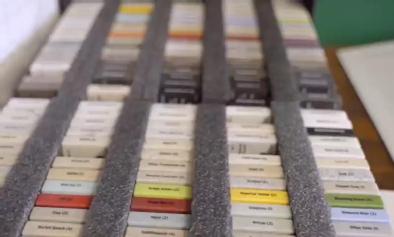
Solution
JCM were introduced to Helena Simmonds, Net Zero specialist at WMG, and they joined the Net Zero Innovation NetworkLink opens in a new window - a group of SMEs all interested in reducing carbon emissions. Helena scoped a project to assess alternatives to landfill for the laminate off-cut to reduce both the environmental and the financial impact. She undertook an environmental and cost assessment and was able to determine that the offcuts generated 366,481kg of CO2 equivalent emissions, costing JCM £7,200 per annum to dispose of them. Using the ‘5 Rs’ sustainability hierarch, she then went onto explore alternatives for the waste offcuts for each level of the waste hierarchy.
This included the identification of a waste management company that can recover energy from the waste to create electricity, recycling the offcuts and using them to development new products, such as filler for injection moulding plastics as well as garden furniture, flooring or polymer gears. To significantly reduce the amount of material used when manufacturing the washroom cubicles, it was proposed that JCM use a “nesting” software which takes 2D drawings of the pieces to be cut from the sheet and fits them to maximise utilisation.
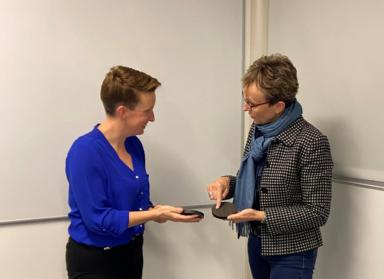
Impact
- New product opportunities are now being explored which could generate a new revenue stream for JCM, further research will prove feasibility
- The nesting software is to be installed and could reduce usage of the material by 5% and speed up the cutting process by 15%
- The project led to additional collaborative work and a grant of £20,000 to implement a collaborative robot to carry out the sanding process in the business. It is already exceeding its targets, saving time, and creating efficiencies


Partnership is key as castings foundry push the boundaries on a suite of projects
“We have been really happy with the work Dr Paul Lansdell and others at WMG have done for us which led us to explore other areas to collaborate including internships, apprenticeships and some joint activity on Net Zero solutions.”
Anthony Evans, Managing Director, Sarginsons Industries Ltd
Challenge
Based in Coventry, SarginsonsLink opens in a new window are a metal castings foundry that specialise in high integrity castings as well as CNC machining, metallurgic and heat treatment expertise. They have high-profile clients and work with partners in the automotive, aviation and oil and gas sectors to offer exceptional lightweight components. They have strong working relationships with a number of universities and research centres and their approach to collaborative work led them to contact WMG to discuss some of their ideas.
The company identified a number of key objectives for the next few years and approached WMG for help in prioritising them and linking them up with the right expertise and support. With an ongoing mission to improve and create USPs in the business, for the first project they wanted to discover if creating a cooling channel insert in one of their die casting processes could improve the integrity, quality, and performance of the parts. When creating complex tooling with this process, there can often be issues and parts can end up cracking due to the high temperatures involved.
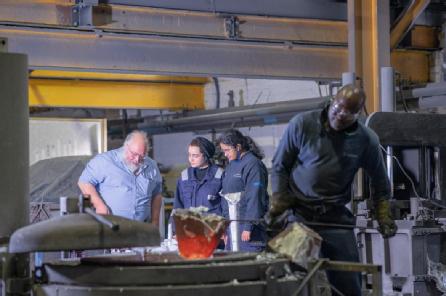
Solution
Using Computer Aided Design (CAD) and Computational Fluid Dynamics (CFD) modelling, WMG were able to simulate a variety of cooling scenarios to identify what process would be feasible and if the insert could be developed using Additive Manufacturing. Now a series of tests are underway to find out which materials are best suited to 3D print tooling for the business.
“3D printing complex tooling will be a game changer for us, minimising the level of costs we currently outlay on tools for casting. Once we decide on the best materials and ALM process, we expect the results to be transformational."
Rick Davies Engineering Director, SarginsonsLink opens in a new window
Impact
-
This initial work led to other strategic project opportunities as well as a collaborative funding bid worth £50k. The expected impact is a significant reduction in energy and excess material with associated reduction in their carbon emissions
-
Having identified that 47% of sand is wasted and never used before it is disposed of in the diecast process, a subsequent WMG Net Zero roadmap has identified how Sarginsons can tackle waste reducing it to just 2%
What happened next?
Sarginsons were keen to keep working with WMG and took on an intern to help support with their processes and production activities. The intern who now works with Sarginsons full time, tested different compositions of metals which will ultimately help Sarginsons to develop lighter and stronger products and increase quality in the organisation. Sarginsons and WMG are also joining forces as part of Coventry City’s Climate Change Board where both Anthony Evans and WMG’s chair Margot James have seats. WMG's Dr Russell Hall and Felix Martin also undertook an investigation into how Sarginsons can recover heat from their hugely intensive casting and forging work to power other functions in the business.Link opens in a new window
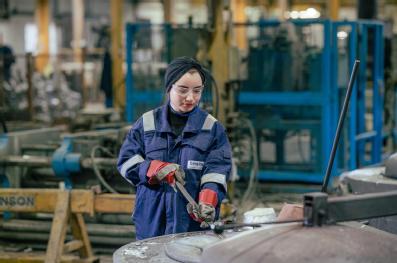
“We have already implemented a number of quick wins to decarbonise the business including joining WMG's Net Zero NetworkLink opens in a new window which was initiated by our client Polestar. Our collaborative work is an important aspect of us achieving our Net Zero goals”
Anthony Evans, Managing Director, SarginsonsLink opens in a new window
“Assisting Sarginsons on their journey of continuous improvement so far has been a real pleasure. Our role is to support companies to increase their OEE (Overall Equipment Effectiveness) and we are excited to see the results of the use of additive manufacturing for tooling as well as how a change in the composition of their raw materials could boost quality. It is great that the company are involved with WMG now on a number of levels which will benefit us both strategically in the long run”
Dr Paul Lansdell, Innovation Manager, WMGLink opens in a new window
To read the full WMG Insights piece on industrial waste heat recovery with Sarginsons- click here
To read the Q&A with Sarginsons's intern Arezoo Firouzeh - click here
For more information about how you can work with WMG's SME group - click here


iSpaniel launches to boost brewery efficiency nationwide
“It’s only with people like Scott from WMG who poke and prod that you get the answers you need"
Nick Davis, Founder of Hobsons and iSpaniel
Challenge
Hobsons BreweryLink opens in a new window is an award-winning independent brewer based in Shropshire. They identified an opportunity to develop a cask tracking service that would be able to track casks from filling, to delivery, through to collection and return to ensure that the location and content-status of every cask was always known. They approached WMG to explore the feasibility and technology surrounding their business idea which they felt could add a lot of additional value to their business.
Solution
WMG worked with Hobsons to develop a ‘smart’ beer cask track and trace solution. It delivered real-time alerts, status, tracking, traceability, and asset management reports and a smartphone-ready ‘Near-Field Communication’ (NFC) tag robust enough to withstand a brewery environment. They also provided the Hobsons team with a proof-of-concept software application to visualise the location data. Using this proof-of-concept cask-based and staff-held technology, Hobsons were able to run a 4-month trial on 1000 of their own casks to prove the concept.
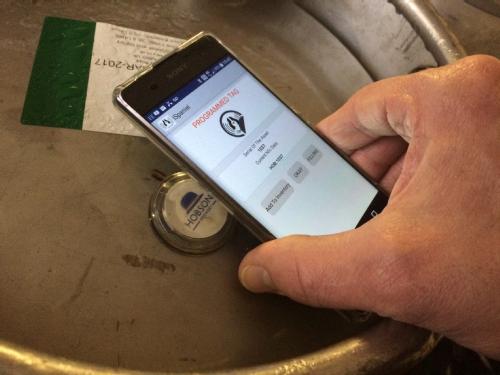
Impact
- Following the project, Hobsons were able to monitor their stock much more effectively, reducing working capital by 20%. The project also allowed the firm to understand its supply chain better and dynamically reconfigure based on supply and demand
- Previously less than 1% of the business was online, now 20% is online – adding additional business of £500,000 this year which they want to double next year to £1 million
- The growth has resulted in 2 new jobs and helped to secure £600,000 funding investment
- Hobsons created another business iSpaniel to roll the technology out to other brewers as well as a range of other sectors enabling organisations to easily trace their containers, resulting in reduced waste and increased profit
Scott CrowtherLink opens in a new window from WMG who has worked with Hobsons from the outset said:
“It’s always good to be able to support innovation, especially one that helps other businesses too. The project, and its success, illustrates how businesses can grab digital by the horns and use it to transform themselves and others across industrial sectors”.
For more information about our WMG SME Group email: wmgsme@warwick.ac.uk



Automation leads to cost saving and transformative change on automotive lines
“It has been insightful to see how straightforward the upgrade to new automation techniques can be for a business like ours and we are already noting the benefits. This is only the start of the journey as we look to implement collaborative automation across the facility which will have a truly transformational impact on the business.” Matt Harwood, Managing Director, Barkley Plastics LtdLink opens in a new window
Challenge
Barkley PlasticsLink opens in a new window is a leading injection moulder, with one of the largest on-site toolrooms in the UK. Although working across a range of sectors, automotive is a huge area of focus for the company. The company has continued to deliver on major automotive client projects, but they were looking for ways to drive cost efficiencies through speeding up production time and improving quality.
They wanted to focus on a particular automotive OEM line which manufactures clear lenses for exterior lighting, worth around 7% of Barkleys’ annual turnover. They were interested in how automation could help them reduce scrap rates and save on operator costs. They were currently experiencing a 20% scrap rate on the 300,000 pairs of lenses per year and wanted to reduce it to around 2-3%. Having worked with WMG in the past on a factory layout project for a JLR and BMW line, they approached the group to see if there was scope for some further support.
Solution
WMG worked with Barkleys to conduct a detailed study mapping out each process, looking at how to improve quality. After analysis of Barkleys’ specific needs, WMG suggested a Cognex vision system and RAR cobot (collaborative robot) to implement automation on this line that would align with an existing pick and place beam robot that Barkleys already had in place. The vision system would scan and recognise parts on the line and would then guide the cobot to detect, pick and place parts in the manufacturing process. The factory simulation of the future state process enabled the production team at Barkleys to see the positive impact automation would have on cycle time, operator usage, reducing waste and a clear view of the benefits they could achieve through investing in the technology. They were then able to decide on the specific models to invest in with continued support from the WMG team and the cobot manufacturer during the implementation of the new processes.
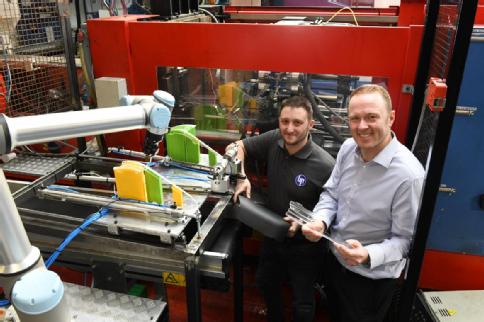
Impact
- This scoping project led to a grant which contributed 50% of the cost of the cobot
- Investing in automation could save over £100,000 in operator utilisation each year. Previously the line had 3 operators working on it per shift over 3 shifts per day, and now it will require just one operator per shift to conduct final checks
- The vision system implementation is foreseen to further reduce scrappage on the lens production by 5%
- The implementation of the cobot has reduced the level of customer returns by half on the line due to more efficient packing
- The project has led to further work including placing a final automated spot check on this line as well as automation on other lines which will result in further savings
“Working with Barkley Plastics on this project has provided us with further evidence to show how useful our support around automation in SMEs is. We have enjoyed applying our expertise on this project and seeing the cobot up and running and delivering quality improvements for the business. We look forward to further collaboration in the future.”
Ioan Lutas, WMG
For more information about our WMG SME Group email: wmgsme@warwick.ac.uk


Lanemark implements value engineering to reduce environmental impact
"We have revised the way we look at product improvement and the design of new products now across the business because of the processes WMG introduced us to. This has the potential to drive real growth and innovation for the future”
Aidan Lewis, Technical Manager, Lanemark Combustion Engineering LtdLink opens in a new window
Challenge
Lanemark Combustion Engineering Ltd Link opens in a new windowspecialise in the manufacture of industrial gas burner units with applications in a range of sectors including manufacturing and petro-chemicals. With an ongoing remit from clients to increase the energy efficiency of these units and a need to diversify into new markets that require burners with lower emissions, Lanemark approached WMG to see how they could increase their sustainability credentials. They had already worked with WMG on a previous project which resulted in efficiency savings of £50k so they were confident WMG’s expertise could help.
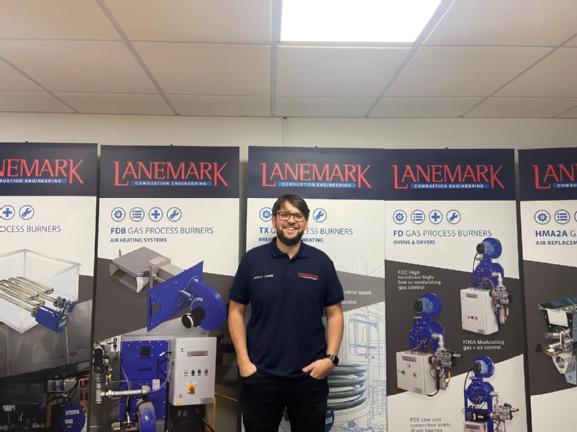
Solution
Lanemark enrolled onto a Net Zero Cohort, a WMG initiative that brings together four to five SMEs with a larger manufacturing organisation and a member of the WMG SME group to work together on Net Zero challenges. After attending a series of workshops and completing a Net Zero readiness assessment tool, Lanemark were able to pinpoint a particular product line that they thought would be suitable to reduce both their carbon footprint and costs.
Colleagues at WMG implemented a value engineering exercise, which involved identifying ways to reduce the size and weight of a particular gas burner product through design and process improvements as well as identifying cost savings in the supply chain. They decided to focus on the control panel and bracket design as it was the most complex of the subassemblies involved. After looking at eight different potential designs, and different materials, they created a new standardised bracket design to link the burner assembly and control panel and reoriented some components to reduce wiring lengths.
Impact
- The project reduced the production costs and environmental impact on the FD gas burner lines by 20%. 10% more than the initial projections and the mass reduction will save 190kg CO2 for just the FD burner line every year
- Lanemark are much leaner in the way they work now across the organisation which will improve engagement with staff and the supply chain
- The Value Engineering exercise has so far saved £16-17k since the project completed and will save significantly more when it is applied across the other four product lines
WMG's Jack DavisLink opens in a new window who worked with Aidan Lewis and the team at Lanemark said:
“This is a great example of how DFMA (Design for Manufacture and Assembly) work can support companies to achieve their Net Zero goals. Through our Net Zero support activity we show manufacturing SMEs how simple reconfigurations of products and engagement with supply chains can make a big difference to reducing carbon footprints.”


WMG helps R53 Engineering Ltd to save time and materials while improving product performance with metal additive manufacturing
R53 Engineering Ltd (R53) is a UK based small to medium enterprise that provides quality and effective solutions to high performance engineering industries including, motorsport, defence and automotive. Its division, ‘R53 Suspension’ develops suspension systems for high performance applications using the latest technologies.
The Challenge
Suspension components are highly complex; consisting of multiple parts to achieve their required functionality, making manufacturing expensive, challenging, and often time consuming. R53 traditionally manufactures these parts through machining of wrought 7075-T6 aluminium alloys but innovation was being restricted by their existing manufacturing capabilities.
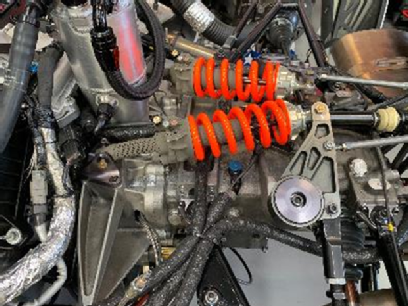
The initial challenge was to identify alternative alloys that would offer equivalent or superior mechanical performance by introducing the process of metal Additive Manufacturing (AM), widely known as metal 3D printing, a technology that R53 was hopeful would enable the development of lighter and more efficient dampers.
The second challenge was to redesign their dampers against demanding specifications including, the reduction of multiple-part assemblies to single components, optimising internal fluid flow paths and enabling weight reduction and improved efficiency and performance, whilst ensuring manufacturability of the designs using metal AM.
To help achieve their goals, R53 partnered with WMG and Canada-based, Precision ADM Inc. (PADM), and received funding from Innovate UK through the ‘UK and Canada: Enhancing Industrial Productivity’ program.
Solution
The team at WMG worked together with PADM and R53 to create a new damper design based on key specifications and a Design for AM (DfAM). Taking advantage of the design flexibility offered by AM, the team were able to create lightweight and functionally optimised dampers that enhanced build speed, reliability and quality, whilst reducing costs.
The design optimisation process conducted by PADM focused on streamlining the flow paths and linking them to the interface boundary conditions, so material was built up only where necessary. This led to a design with the lightest weight geometry. Part consolidation methodologies were also employed to integrate parts to reduce weight and production time, and to reduce maintenance costs. PADM also deployed AM process simulation tools to predict part distortion and to guide the redesign and AM build set-up, to achieve optimal part accuracy.
Materials were identified by WMG through a detailed review of literature and the AM sector, using a ‘decision-matrix’ method to list and rank potential materials.
WMG went on to develop the processing window for Laser Powder Bed Fusion (L-PBF) metal AM based on R53’s component requirements through an extensive systematic experimental study. The parameters were refined to reflect changes in wall-thickness and surface build angles, optimising for material density, mechanical properties, and surface finish. Heat treatments were identified to obtain optimum microstructure and minimum defects. Through these processes, mechanical properties superior to the 7075-T6 alloy were achieved.
Full-scale components were manufactured by PADM and validated for operational efficiency by R53. These were supplied after each major redesign, with substantial weight savings and efficiency improvements demonstrated at each stage.
Impact
-
At project end, the damper offered a 44% weight reduction over the traditionally manufactured damper: Fig. 1 (a) to (c).
-
A further 64% weight reduction (600g) was achieved by implementing lattice structures compared to conventionally manufactured (multi-component) assemblies: Fig. 1(d) to (e).
-
A 10% faster reaction time was achieved due to the optimised fluid flow paths.
Roger Estrada, R53 Managing Director commented: “The aluminium metal 3D printing not only achieved weight reduction by creating an aesthetically pleasing design, but it also gave us several benefits including improved overall performance of the components, quick prototyping, shorter time to market, with significantly reduced costs from machining to overall cost. Above all, it allowed us to design a part that has better mechanical properties than its counterpart”.
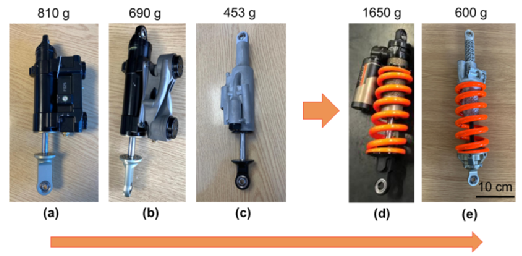
Fig. 1 Damper comparison (a) conventionally manufactured assembly (multi-component)- 810 g; (b) combination of conventional and AM component assembly – 690 g, (c) integrated AM assembly (combining multiple components) - 453 g (44% less than conventionally manufactured, a). Further weight reduction achieved through lattice structure: (d) conventionally manufactured assembly (multi-component)- 1650 g and (e) fully assembled with lattice structure – 600 g (64% less than conventionally manufactured, d).
Written by:
Dr Hiren R. Kotadia, Senior Lecturer, School of Engineering, Liverpool John Moores University, and Professor Gregory Gibbons, Head of Additive Manufacturing, WMG, University of Warwick
Summit Systems IoT capability boosted by impressive intern
Summit customers are now able to access machinery performance data on the cloud through a new web interface, further cementing the company’s leading position in the market.
Background
Summit Systems has been an industry-leading supplier of ancillary equipment and machinery to the UK plastics market for over 30 years, supporting a drive for increased efficiency and less plastic waste. They provide equipment for material storage, conveying, blending, drying, and granulating amongst a range of other things, and also supply the plastics recycling industry.
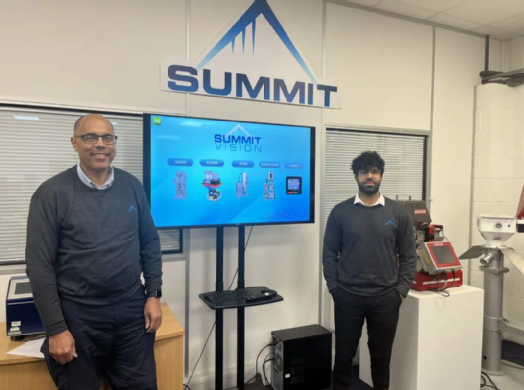
Challenge
At the forefront of innovation in the sector, two years ago Summit Systems created a new division called Summit Vision which uses IoT (Internet of Things) technology to capture and manage data across the plastics manufacturing process. It is a useful value add for customers buying Summit equipment as they can keep track of machinery performance, monitor downtime, and the specific conditions that may affect energy usage. Summit deploys innovative sensor technology to capture data and troubleshoot conditions and then gives customers access to the data to take action if required.
They approached WMG to explore how they could build on this work to improve the accessibility and usability of machine data for their customer base. They wanted to enhance their existing HMI (Human Machine Interface) with improved data interpretation and customisation tools as well as make it cloud based so data could be accessed on the web and customers could quickly contact them if required.
Solution
WMG recommended its 12-week internship programme as a solution to the challenge. Through the programme, Summit took on Zain Mahmood who was studying for a Masters in Mechatronics and Robotics at the University of Leeds. Zain was deemed the perfect fit for the company and quickly settled in alongside R&D Manager, Wade Grindley, and Automation Engineer, Daniel Jefferies. Zain got to work understanding the HMI and cloud services that were available to develop an interface and how the existing systems would interact with a new interface. It was a steep learning curve, but he spent time developing and perfecting his programming skills and through applying the skills he had acquired at university went on to build and deliver the project.
Impact
-
Zain transformed the existing HMI by launching a polished cloud-based user interface with customisable features allowing customers and Summit to access information more easily
-
The new system will increase efficiency and productivity for Summit and its customers as issues with machines can now be quickly identified and acted upon in real time
-
After showcasing the new interface, Zain succeeded in onboarding a new client for the company contributing to an increase in revenue
-
Through the work Zain completed, there is scope to add more equipment and products to the interface for the company to grow its Summit Vision offering, creating additional competitive advantage for the firm
Wade Grindley, R&D Manager, Summit Systems Ltd, commented “Having Zain with us for 12-weeks has been great. During this time, he has been a valued member of the R&D Team. He has been able to complete all projects assigned to him in a fraction of the time set. His ambition to learn and grow in this role has been fundamental to the development of the Summit Systems Supervisory System. He has a great work ethic, and it has been a pleasure having him in our team and we wish him success in his future endeavours.”
Zain, WMG Intern, said “I cannot thank Summit Systems enough for this opportunity. Wade and Daniel have been excellent at helping me to develop my skills and knowledge of the products and systems. I would recommend Summit Systems to anyone considering an internship in Research and Development.”
WMG supervisor, Marfil Castillo Duenas, added “Zain really hit the ground running with this project and delivered an exceptional product for the company. Having a devoted resource to work on developing something new in a business can reap many benefits and, in this case, has provided a clear competitive advantage for the business. It has been a pleasure to offer my input on this project and witness its success.”
Following the success of his internship with Summit Systems, Zain has pursued roles closer to his hometown of Manchester which will further allow him to develop his skills and knowledge.
For more information on WMG internships contact wmgsme@warwick.ac.uk
Heritage locomotive project picks up steam through WMG support
“WMG’s support on this project has been invaluable. The advice we have received from Dr Lansdell has enabled us to look at options that we never would have considered before that have the potential to save the project tens of thousands of pounds.”
Martin Shepherd, Director, 3D Heritage
Challenge
SME 3D Heritage has been working with registered charity The A1 Steam Locomotive Trust (A1SLT)Link opens in a new window on a mission to revive long-lost steam locomotive designs. Their new project is to build a Gresley class P2 steam locomotive No. 2007 Prince of Wales at its Darlington Locomotive Works (DLW). The original class P2s were designed by Sir Nigel Gresley to haul 600 ton trains on the arduous Edinburgh to Aberdeen route, however sadly, the design was never fully developed.
With new technology and expertise, the Trust and 3D Heritage wanted to bring the class P2s back to life. The project has already come a long way with a whole range of parts in development, however there were some specific design and materials challenges with the original Lentz valve gear and cambox (the box that houses the valve gear mechanism) that the consortium needed to resolve.
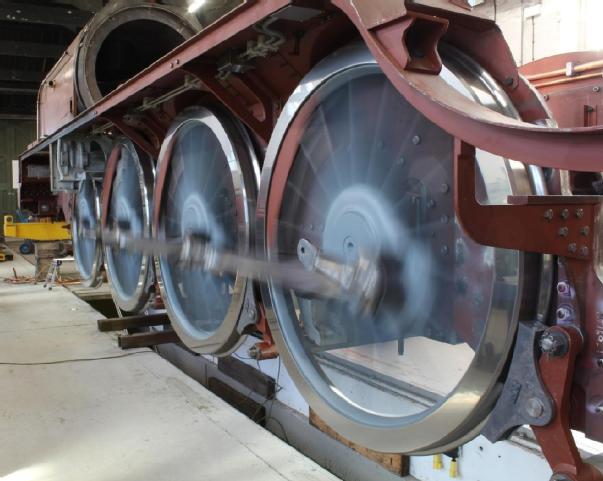
Solution
With around 120 parts, the cambox is one of the most complicated assemblies within the locomotive. Before committing to spending money on patterns, castings, and machined components, 3D Heritage and the Trust needed to ensure that the overall concept was functionally correct and that they could manufacture and assemble the many parts.
WMG's Dr Paul Lansdell who has a range of experience in metallurgy and was previously the Chief Mechanical Engineer at the Dean Forest Railway created a CAD model of the designs that could be tested and amended. He recommended the use of 3D printing in ABS plastic to create a one-third scale model of the cambox for the team to see if any changes were required to the parts before committing to manufacture. The box also featured a series of windows that enabled the engineering team to see what was happening with the valve mechanism on the inside. Following the creation of the model, Dr Lansdell explored the material grades, surface coatings and heat treatment which had previously caused issues. He then used 3D printing to create sand moulds to manufacture various parts of the locomotive. Developing patterns for sand casted metal parts can be extremely expensive and if there is an issue with the casting of the part it can be costly to start the process again.
Impact
- This work has been extremely transformative, giving the project a huge advantage for making reliable and durable valve gear.
- The model of the cambox was used to educate sponsors and donors of the inner workings of the Lentz-Franklin valve gear resulting in additional funding for the project
- The introduction to modern materials and treatments will optimise the performance of the locomotive, giving the project the sustainability and durability that was vitally missing in the original designs by Sir Nigel Gresley back in the 1930s.
- Using 3D printing to create the cambox model and potentially the castings to create actual final parts will save 3D Heritage and the Trust tens of thousands of pounds
“I have been honoured to work on this prestigious project which has allowed us to apply leading edge research and new techniques on a real-world business case.” Dr Paul Lansdell, WMG
Please click here for more information about WMG's support for SMEs


Dtronix brings batteries back to life with a WMG intern
DTRONIX specialise in supporting warranty and non-warranty electronic product returns for the Automotive OEM, Aftermarket, and Professional Audio Equipment industries. Their expertise lies in the service, repair, analysis, remanufacturing and refurbishing of electronic products.
Challenge
The micromobility sector is growing at a rapid speed, with the trade forecast to be worth up to $150 billion in Europe by 2030. With the rise of micromobility vehicles being used, Dtronix recognised there was an opportunity to help make the industry more sustainable by reviewing what happens to faulty battery packs and battery management systems.
Currently, a large number of end-of-life, faulty and defective battery packs end up in landfill. Often these products could be repaired or repurposed. For example, a switch failure, which can easily be repaired or replaced, often results in the whole battery pack being discarded. There are therefore wide ranging environmental and financial benefits through providing second life applications for the batteries.
In light of this insight, Dtronix partnered with WMG and took part in the WMG Internship Programme. The main objective of the collaboration was to use Dtronix skills for identifying ways to repurpose lithium-ion battery packs from the micromobility sector.
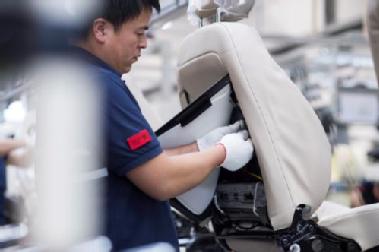
Solution
The intern Arun Choudhary joined the Dtronix team for 12 weeks. Arun was tasked with finding how Dtronix could minimise the number of batteries going to landfill and propose ways to add revenue streams and maximise profits. Arun was aware that end-of-life batteries still hold up to 80% capacity that can be repurposed in low C-rated applications (such as energy storage), which Dtronix could then add as a revenue stream.
Arun’s investigations led to two valuable findings. Firstly, that batteries, which are destined for recycling could be reused or repurposed and have a second life. Secondly, that it is possible to take these batteries and place them back into the market before extracting the key materials for recycling. These findings have the potential to add an additional revenue stream that Dtronix could add to their portfolio.
During his internship, Arun wrote a formal business plan for the company, which included strategic and tactical recommendations for test equipment and storage solutions to help reduce costs.
Impact
Dtronix valued Arun’s hard work and insights and hired him as a full-time employee after his internship period. By using the Internship Programme and working with WMG, Dtronix have now a clear direction and strategy to help them achieve their vision of reducing the number of batteries going to landfill by leading responsible and sustainable solutions.
By specialising in micromobility, Dtronix have engaged with market leaders in the industry and fast becoming leaders in the Lithium-ion battery recycling market.
“Through this internship, I took a dive into the micromobility market and ended up developing a deep passion for this revolutionary sector. I have also gained new business development skills, growing my network and making new connections in the industry. The experience has also helped me hone my market research skills and technical knowledge in the world of batteries” Arun Choudhary, Intern, WMG.
“Sustainability is the driving force of everything we do here at Dtronix. Taking an intern on board gave this project the focus and the time it needed. It has been a valuable journey which will help us grow the business in a new direction. We’re excited to see the benefits of putting Arun’s hard work into action!” Monica Dass, Director, Dtronix.
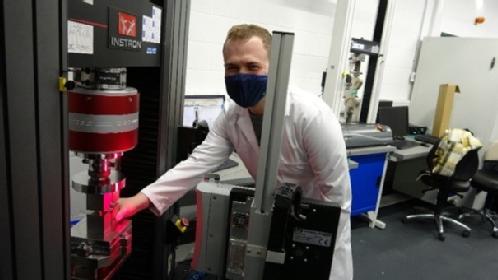
For more information about working with us please email wmgsme@warwick.ac.uk
Make your processes Cast Iron with an intern
Established in 1946, Cast Iron Welding Services (CIWS) have a wealth of experience in the gas fusion weld repair process of cast iron.
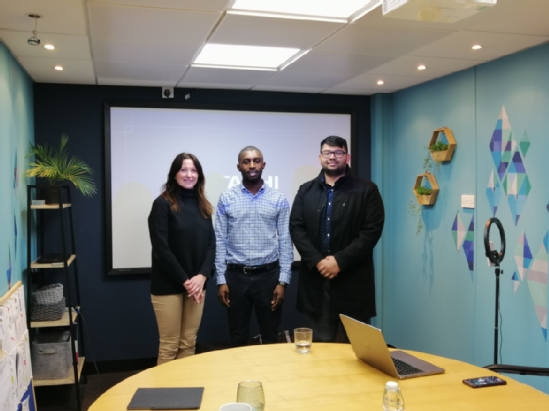
CIWS work predominantly in the marine and power engine industry. Their casting repair skills are in high demand for repair and for an increasing amount of heritage castings in the form of architectural, steam and vintage vehicle components. Typical problems dealt with are mechanical damage, fractures, erosion, and cracks.
Challenge
Many of the processes used by CIWS relied on storing paper-based documentation and manual entry. To make the operational processes more efficient and to improve the data flow within the organisation, they needed help to create new digital practices and procedures. Specifically they wanted to eliminate double entry of information and enable a smoother flow of data from the work floor to the Manufacturing Resource Planning system (MRP).
Solution
To help make CIWS more digital, they brought on a WMG intern - Clifford TsunguLink opens in a new window, an engineering graduate from De Montford University. The internship project initially was set up for 8 weeks to focus on four areas of improvement. These included;
- Developing web-based frontend interface for work floor to enter parts details
- Creating and maintaining a database to store the data
- Liaising with ProgressPlus (a MRP system that CIWS use to monitor and plan their production) to develop a detailed label system
- Creating a data display interface for the workshop to view activity progression
Clifford was able to overcome these challenges by developing a full-stack application to record and store data from the shopfloor as well as testing applications to understand and improve usability. The intern also worked with ProgressPlus, having technical discussions to develop a deeper understanding of the system. This enabled CIWS to maximise the benefits of the software and establish a more valuable relationship with the vendor for further work in the future.
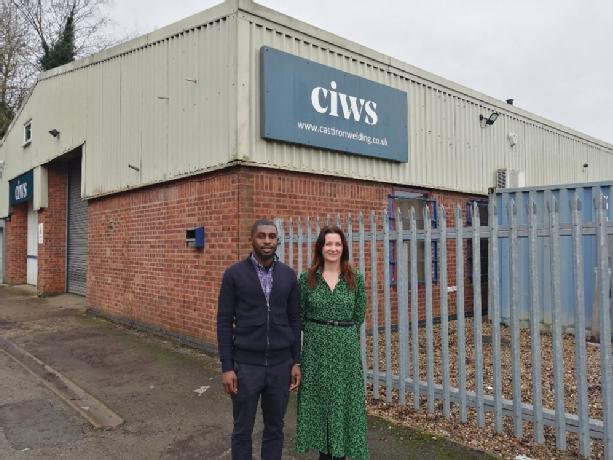
Impact
By creating a digital application, CIWS no longer had to rely on any paper-based processes. This also achieved the initial goal of reducing double entry. The impact this had on resource was significant – the average data entry used to take approximately an hour, because of the new system it was reduced by 90% to just a matter of minutes.
In addition to reducing the time, it also enhanced the accuracy. Now that the in-house process connected directly to the MRP system this significantly reduced the likelihood of error.
By choosing to work with an intern instead of software consultants for this full-stack application CIWS saved up to 70% on costs. CIWS were so thrilled with the results of working with Clifford that they extended his stay for another month and are investing in an additional intern too.
“Having the additional resource has been such a huge help” commented Marie PalmerLink opens in a new window, Director of Cast Iron Welding Services “We knew that the processes we were using could be more effective, but didn’t have the time or capacity to review. Clifford has been such a valuable member of the team since he joined and we’ve gained so much from the WMG internship program”
Engineer, Shadman RafidLink opens in a new window, of WMG said “The improvements that Cast Iron Welding Services have made to their processes have been incredibly impressive. Not only have they revolutionised their paper-based procedures but the overall time and money saved will have long-lasting effects”
For more information on working with WMG or joining the WMG Internship Programme, please email wmgsme@warwick.ac.uk


Digital solutions leave seat manufacturer sitting pretty
Car manufacturing in the UK is changing radically, as the electrification is forcing innovation and design change of almost all parts of cars. Industry leaders are challenged to change design radically, launch new products more quickly, while maintaining quality levels and costs. To keep up with this, many manufacturers in the supply chain are already embracing digital technologies to connect their factories, improve processes and reduce costs. By embracing digitalisation, the electrification of the automotive sector could unlock growth of up to £75bn by 2035, benefitting the entire supply chain.
Using digital to develop manufacturing
Lear Corporation are a leading supplier of automotive seats and electrical systems, and their customers include major OEMs such as Jaguar Land Rover. With a long history in luxury and performance seating, they are one of the world’s largest providers of premium automotive leather seats, operating over 250 facilities across 38 countries, including 3 Just in Time final assembly plants here in the UK.
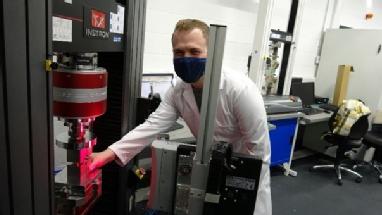
With safety and performance paramount, Lear must ensure that every seat is of the highest quality but working with comfort materials, such as foam, and natural materials, such as leather, brings with it a number of challenges. Not least, the natural defects that occur in these materials, such as wrinkles and discolouration, which must be rectified before products are ready for the customer.
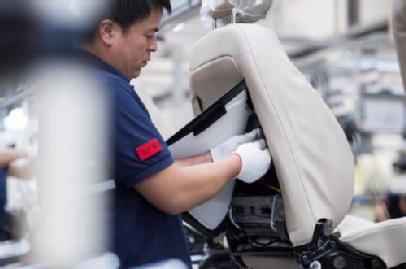
Back in 2017, Andrew Williams, Director, Process Innovation at Lear Corporation was looking for ways to deploy digital technology to improve their seat inspection process, reducing waste and rework. “Seat inspection takes place at the end of the production line, and it’s a manual process which relies on the judgement of experienced operatives,” Andrew said. “But ultimately, it is subjective, we set our standards very high to protect our customer but human judgement will always have an element of variation.”
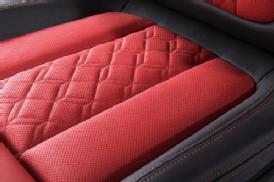
Lear wanted to innovate and deploy smart manufacturing solutions that would automate the inspection process, providing increased consistency and generating quantitative product data to the engineers in our relentless pursuit of perfect quality. Lear approached WMG as a market study showed a lack of readily available commercial and deployable solution that suited Lear’s needs at that time.
“We already had a relationship with WMG with apprentice, undergraduate and post graduate training programs. Lear’s philosophy is to constantly look for ways to use new technology to improve manufacturing processes and knowing WMG were all about industry-focused research, we knew they would be a good fit for this challenge.”
Andrew teamed up with our Automation Systems Group on the Lear Seat Manufacturing (LSM) project, supported by funding from WMG Centre HVM Catapult.
Exploring the possibilities
After scoping the project carefully, WMG set about building and testing machine learning-based object detection systems as an inspection tool; Using image capture systems mounted on a seat inspection station, the solution would be capable of detecting and classifying defects, and of assessing whether the seat would be acceptable against the customer standards, or whether additional rework is needed.
Developing the solution and training the AI, involved manually labelling a large data set. To facilitate this process, the team developed a “digital marker” that allows an in-line, in-process labelling workflow.
Dr Dan Vera, Associate Professor at WMG, said: “To train the AI inspection system, you need to tell it what defects are and what they look like. You have to label defects so it learns. Typically, labelling is done offline, after images are captured. With the labelling system developed at WMG, operators can digitally label defects on the real seat, and directly on the production line – we call it the magic wand!”
In order to test how the different elements would work together in a real manufacturing environment, we installed a prototype inspection station in the National Automotive Innovation Centre (NAIC) at WMG before taking the station into Lear’s plants for evaluation in production.
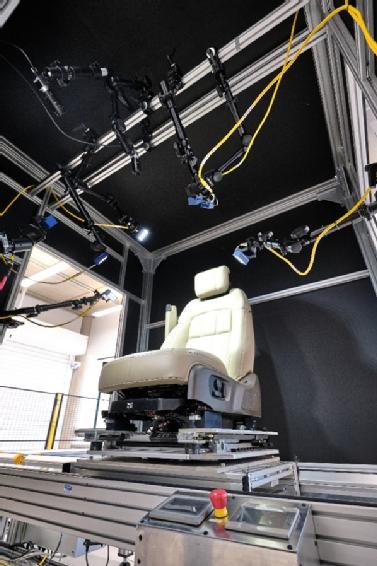
Looking to the future
The machine-learning seat inspection software was trialled at two of their factory sites, allowing it to collect data from different types of seat and improve its ability to recognise and categorise all types of defect. It is now on track to deploy across our plants worldwide.
Andrew said that without the help of the team at WMG, supported by funding from HVM Catapult and Innovate UK, they might have missed this opportunity. “This was unchartered territory,” he reflects. “Because this technology was so new, and there were no commercially available solutions at the time, we would not have had the bandwidth to develop this in house. The cumulative effect of these projects has the potential to significantly increase the consistency of our inspection processes and provide our customer with even higher quality products.”
Lear has showcased the test bed in NAIC to some of their key customers, who have been impressed with the outcomes of their work. There is a continued appetite within Lear to develop new ways to use digital technology to improve their manufacturing processes.
For more information about this project, or working with us, please email wmgbusiness@warwick.ac.uk.
Composite Braiding intern reduces waste, creates new products and more
Composite Braiding manufacture braided parts from composites, a technique that is used across a wide range of industries including rail, automotive, infrastructure and leisure. Although the process is inherently more efficient in comparison to other composite manufacturing processes using prepreg (where material is cut at a specified orientation resulting in unused material being left over), there is still a small amount of waste produced from the start and end of braiding. Historically the material wastage in composites manufacturing is up to 35%, whereas the braiding process usually wastes only around 5%. The team at Composite Braiding were keen to make use of the discontinuous fibre composite parts and wanted to find a way to use their off cuts to also make components. This would provide not only opportunities for different types of product but also a new form of revenue for the business.
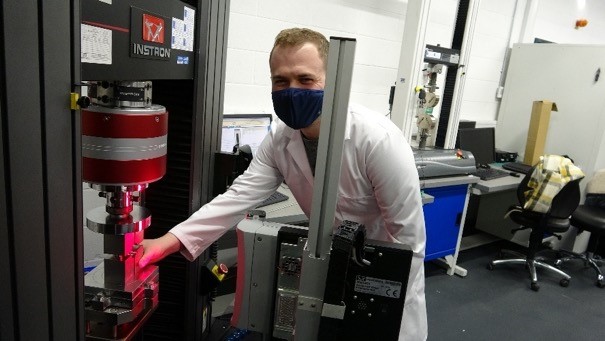
Solution
Having worked with WMG previously on energy efficient tooling and antimicrobial grab poles (see here), Composite Braiding approached the SME team to help with this challenge. After discussing what support was needed, WMG placed an intern, Adam Fletcher, with Composite Braiding for 12 weeks to help with reducing waste from the current process.
A recent Coventry Graduate, Adam, was tasked with evaluating the feasibility of whether the off cuts could be used to create additional components. Focusing on the cutting, distributing, moulding and characterisation of this new material and its offcuts to identify if it could be used to create additional new products.
Following the success of his first 12 weeks and the insight he provided Composite Braiding through his observations, they extended his internship for another 12 weeks. This was so he could focus on creating a new prototype.
Throughout his time at Composite Braiding, Adam took part in project management, planning, moulding, thermal characterisation, mechanical testing, part design and tool design. Expanding the product range, as well as the skills on his CV.
In addition to having an intern, WMG supported Composite Braiding by providing access to their state-of-the-art facilities and equipment at the University. This enabled them to strengthen their knowledge on composite manufacturing and material characterization even more.
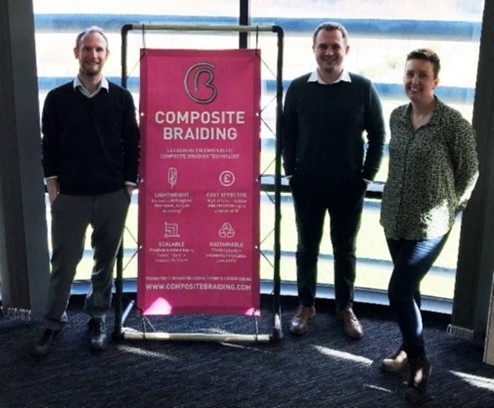
Impact
The findings resulted in Composite Braiding being able to offer a wider range of products for their customers and has brought them one step closer to their vision of becoming a zero-waste company, demonstrating the potential to reduce production waste to almost zero. The business has received a range of demonstrator plaques and performance data, and shared this new capability with their customers to help share best practice and enhance their product portfolio.
Alastair Barnett, Director and Senior Engineer, commented: “The value of having highly capable, dedicated extra resource provided by WMG and access to WMG’s testing facilities for this work has been very beneficial. We knew there was potential for making useful, attractive, complimentary products from our minimal waste material and Adam’s work has proven this.”
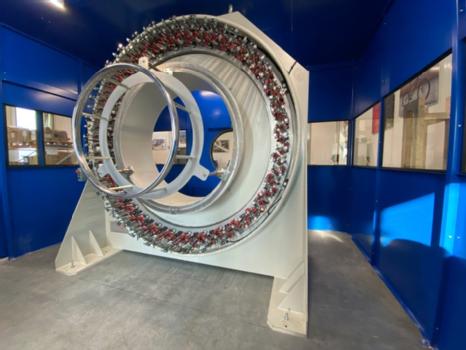
For more information on working with WMG or joining the WMG Internship Programme, please email wmgsme@warwick.ac.uk
Loqski continues improving skiing device with WMG
Safe and sound
On a ski resort, after spending time on the slopes skiers will often head inside for a break in a restaurant or bar leaving their skis with everyone else’s on a rack outside. For this reason avid skier James Pittard decided not to buy himself expensive skis for fear that they would go missing, whether intentionally or unintentionally.
This led him to think about an easy to use, pocketable device that could lock both skis and poles simply together.
What emerged was the LoqskiLink opens in a new window lock. A highly advanced security combination lock with 10,000 different combinations compared to the average maximum of 2000, the durability to survive temperatures of -50°C and ability to be used with ski gloves on.
Taking his idea to a design agency, the LoqskiLink opens in a new window ski lock was launched in a zinc-based material.
However, as sales were taking off the zinc-based material couldn’t be manufactured quickly enough to keep up with demand and if he wanted to increase volume, he needed to cut manufacturing costs.
“Firstly, the zinc die-cast model is expensive to make because when it comes out of the tool it needs a lot of finishing to make the product look good enough to be able to go to market. And secondly, we needed to strip out a load of parts to improve the assembly because all these were making it difficult to assemble and so pushing the cost of production up,” explains James Pittard, director of Loqski.
Until they discovered GV-5H, a glass fibre reinforced thermoplastic material that is often used in the automotive industry as it’s incredibly tough yet lightweight.
James then approached WMG for help on a number of aspects of looking into Grivory GV-5H, including testing the material, assessing the strength of the redesigned components in the assembly and giving advice on ways in which costs can be reduced during the manufacturing process.

3D printing a solution
Whilst it’s not possible to 3D print in Grivory GV-5H, we printed the prototype parts in strong engineering plastic with a carbon fibre infill using Markforged Mark 2 FDM printer that would reflect the strength of this material. These prints proved the suitability of Grivory GV-5H for this product.
With Loqski having already made a substantial investment in current tooling for its existing zinc-based product, we assessed whether the redesigned barrel design component would fit into the assembly as changing just this one part would help reduce costs. We produced many 3D prints of the barrel component using Markforged Mark 2 FDM printer. These parts were then thoroughly tested not only for form and function but also to assess that it would fit with the other components in this existing assembly.

Streamlining manufacture
Being able to fully test the fitment of the new barrel design enabled Loqski to compare the cost of having to tool a completely redesigned product, which would be an excess of £50,000, or spending £7,000 for tooling just this barrel component and using it in the existing assembly.
“Loqski are now in a position where they are able to streamline manufacture. With less components to assemble, the assembly time has sped up and so manufacturing costs have been reduced. Loqski always had an ambition of keeping manufacture in the UK and by reducing manufacturing costs we are pleased that we could assist them in doing that,” says Neil Jeffree, Innovation Manager at WMG.
By reducing manufacturing costs Loqski is now able to produce a more cost-effective end product in higher volumes, which will put the company in better stead to work with distributors and have the product stocked by retailers worldwide. It has also led James to consider expanding the product’s reach even further.
“One of the things we’d now like to push is getting the new product into the ski rental market, where it can be hired out when skiers rent their skis. This is something we would never have considered with the zinc-based product as it was just too expensive,” says Pittard of Loqski.
For information on working with us, email wmgsme@warwick.ac.uk.


WMG Accelerator Programme helps Birmingham business bring authentic Oriental and Asian food manufacturing to the UK
Background
Top Oriental is a niche-food manufacturer based in Birmingham that produces Oriental and Asian food products for the UK and European markets. They have a large facility in Coventry containing semi-automated food production lines. Given that the majority of Oriental and Asian food products have historically been imported into the UK with little customisation to UK consumers, Top Oriental saw an opportunity to re-shore manufacturing capability in this area back to the UK and make market-leading products designed with customer requirements in mind.
Challenge
WMG has a longstanding relationship with Top Oriental. Previous to joining WMG Accelerator, WMG Professors in Innovation & Entrepreneurship, Prof. Jay Bal and Prof. Xiao Ma advised the transformation of the business from a ‘manufacturer to wholesale’ model to ‘direct to customer’ model. Top Oriental were keen to improve their production capability and strengthen the commercial side of the business.
Finding out how the WMG Accelerator team could help tackle these challenges, Top Oriental wanted to grow their revenue and permanently move to a ‘direct to customer’ (D2C) business model in order to achieve their objectives.
As part of the preparation for entering the Accelerator, the team diagnosed a number of issues in Top Oriental’s production and commercial operations. In particular, there was reduced visibility across the stock management process and some production processes were avoidably manual. On the commercial side, there was no room for new product development, piloting was limited and there was limited resource to develop new sales channels and market research.
Top Oriental needed resource fast, and the knowledge and best practice to progress. To provide the best solutions, Top Oriental joined the WMG Accelerator Programme to help them overcome their challenges.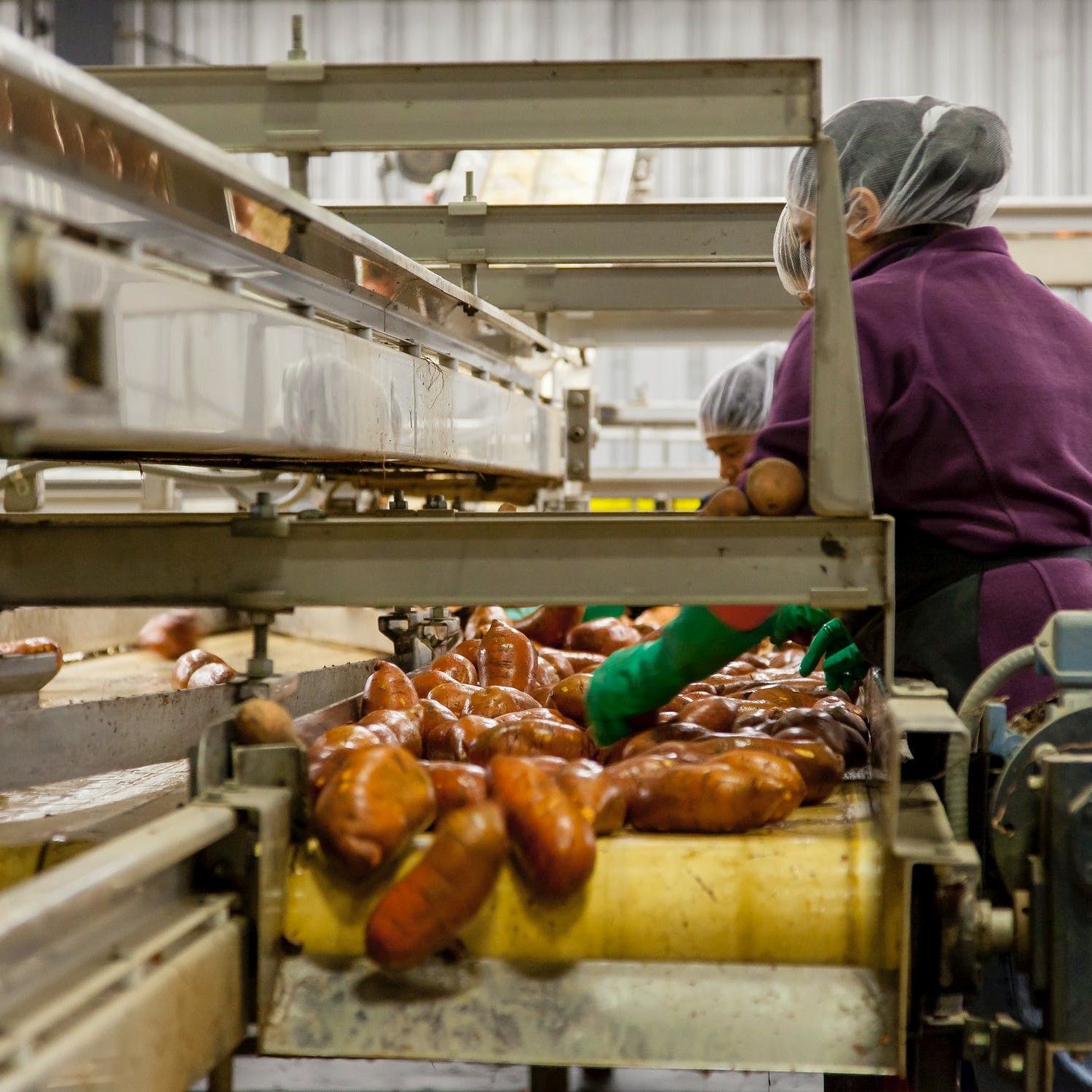
Solution
Working in collaboration with WMG, Top Oriental were able to:
§ Identify gaps in between product development and customer taste profiles using quantitative social listening and qualitative customer research.
§ Gain the skills and knowledge of “lean start-up” methods in order to accelerate their product development cycles, so they could go from gathering market intelligence to real product testing and new product launches in shorter time frame.
§ Created new products based off identified market requirements, most notably a tofu-based snack given the growing demand for alternatives to poultry and red meat in the UK market.
§ Mapped their existing large production facility and created the first production “digital twin” to identify and diagnose bottlenecks and wastage points, in preparation for the rapid responsive reconfiguration of facilities to cater new product development.
§ Assessed a range of lightweight enterprise resource planning (ERP) systems for manufacturing SMEs, and recommended a “best fit” solution to cater a lean start-up model of the rapid responsive reconfiguration of facilities. ERP software systems help organisations manage critical business operations, aligning and creating visibility across all key functions of the operation, including procurement, project management, risk management, compliance and supply-chain.
Impact
As a result of this collaboration, Top Oriental has successfully adopted a “lean start-up” model for its production from market validation to manufacturing and has managed to iterate on its production line and corresponding manufacturing reconfiguration on a quarterly basis. This core enabling ability has led to:
§ Launch of three new product groups, now widely distributed across the UK
§ Increased sales by 30%
§ Re-shoring niche food production back to the UK, given that many of its products were previously imported from the EU.
§ An increased order from the EU, though Brexit still hinders the actual export process. Top Oriental has an estimated £50k per month export value, under the assumption of a smooth export process to EU.
§ Implementation of the ERP system recommended and co-validated with the WMG Accelerator team
§ WMG assisted Top Oriental in securing a new Chief Operating Officer (COO) – who is now executing the newly defined strategy
§ The COO and the WMG Accelerator team are now exploring further project opportunities to ensure Top Oriental continue its innovation in both growing into niche markets, and manufacturing capability advancement.
Ming, CEO at Top Oriental, commented: “It is difficult for businesses to consider disruptive innovations when you’ve been working one way for so long. WMG Accelerator supported us in finding and materialising our new competitive advantages and rapidly responding to a new niche through dynamic reconfiguration of production ability.”
Xiao Ma, Project Lead at WMG, added, “WMG Accelerator team is trying to bring industry transformation to life. We help innovative businesses, such as Top Oriental, to adopt proven methodologies to challenge the current status quo in its industry. It is exciting to see a disruptor has pivoted from “playing” the existing game in its industry, to instead becoming a “game master” by creating new innovations and routes to market for its industry sector.”
For more information about joining the WMG Accelerator Programme, please email us on wmgsme@warwick.ac.uk
The grass is even greener for Allett after WMG internship
Background
Allett Mowers, a British-owned company based in Stafford, has been designing and manufacturing walk-behind cylinder lawn mowers for over 50 years. Allett’s customer base ranges from professional groundsmen producing sports surfaces in any weather for athletes; to palace Head-Gardeners; to homeowners. In April 2019, Allett won the Queen's Award for Enterprise: International Trade 2019 in recognition of its growth in exports and contribution to the British economy.
Challenge
Traditionally, Allett has manufactured wired and petrol lawnmowers that are bespoke for each customer. Understanding growing customer needs, Allett was aiming to manufacture a high volume of electric lawnmowers that were easier to produce in large numbers. The challenge was that they did not have the production capacity and manufacturing processes in place to mass-produce a new electric lawnmower.
The company created the first prototype of their new electric lawnmower and were already looking to develop prototype two. However, Allett knew that down the line they would need a more speedy and efficient production layout and process, as well as key manufacturing and engineering skills relating to it. They needed new ways to record cycle times of production and produce a standard operating sheet.
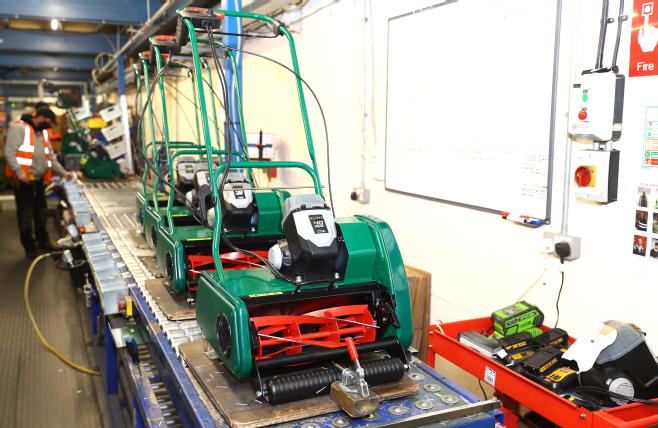
Solution
Allett came to WMG knowing they had the required expertise in manufacturing processes and efficiency. In discussions with the WMG SME Group they collaborated in various activities to streamline processes, make sure tools were correct, foster a culture change from one manufacturing method to another, and support a new supply chain.
Gary Loughran and Richard Savidge, Innovation Managers at WMG, provided insights into where Allett could quickly implement change. Richard and Gary were able to provide a fresh pair of eyes to the factory and were able to assist Allett in optimising processing, process equipment, layout, and flow to eventually produce these new electric lawn mowers at a high volume.
In addition to factory mapping, the WMG SME Group recommended the WMG Internship Programme and helped recruit and supervise an intern who could take on the role of launch engineer for Allett. Over 12 weeks the intern, Alexander Picton, a mechanical engineering student from Coventry University, ensured the product design process met the function, performance, safety, and quality requirements. This also fed into the optimisation of manufacturing quality and process performance needs.
Alexander was able to be the interface between production, quality, and engineering. The steps they took were to understand the current production process, identify potential failure modes, provide layout recommendations and finally, scope implementation for future opportunities.
Impact
- During the design, Alexander and the team at Allett were able to iron out more than 100 potentially problematic design challenges to create the best new prototype.
- Thanks to the work completed around the first prototype, the second edition will be made quicker and more improved than the last, making its route to market quicker.
- Supported the optimisation of process, layout, and workstation development, which successfully improved speed and quality of production.
- Allett received key support from the intern, WMG experts, and access to the WMG state-of-the-art technology that they wouldn’t have got anywhere else. They are aiming to launch their new electric lawnmower in the near future.
Alexander Picton, WMG Intern, commented: “Working in collaboration with Allett has been a fantastic way for me to develop the skills I have learnt during university. Allett was a welcoming and dynamic team who are stepping into the future of lawnmowing without compromising on their years of built-up lawnmower experience. We can’t wait to see the finished product.”
Austin Jarrett, Director at Allett Mowers, added: “Working with WMG was just the support we needed, without the team and the internship programme we would have struggled to prepare for our next line of products. Alexander was a great addition to our team, and we are looking forward to presenting the final product in the near future”.
For more information on working with us, please email wmgsme@warwick.ac.uk.
Warden Plastics reduces materials while maintaining effectiveness of biological random filter media product
Background
Established in 1957, Warden Plastics specialises in plastic injection moulding and extrusion, serving a diverse range of industries including automotive, electronics, medical, construction, and defence. Warden's initial area of activity was the chipping and selling of re-granulated plastics, but it soon expanded its operations to include the design and production of plastic extrusions. Warden Biomedia is the trading name for Warden Plastics’ own product range, enabling Warden to manufacture and market their Biomedia range. Warden Biomedia specialises in the research and development of random filter media for aeration and biological wastewater treatment plants.
Challenge
One of its Biomedia products is the Biomarble, with the principle of increased surface area, the eco-friendly biological filter media are injection moulded in recycled polypropylene with specific design features to increase the efficiency of the effluent treatment process. The excellent ventilation and high voidage performance of Biomarble media make them extremely effective in wastewater treatment applications. The Biomarble is a product currently on the market, and Warden’s management team were looking to see if they could optimise tooling and reduce the product weight. In doing this, they wanted to reduce the cost of production while maintaining the performance of the part. There is growing demand for Biomedia in biological wastewater treatment processes, and Warden Plastics is becoming a global supplier in the wastewater treatment industry.
If successful, Warden was also seeking to make similar cost and material savings for its next-generation spherical design product, which is still in development stages.
Solution
After initially meeting WMG's SME Group at a networking event, Warden reached out to us for support. After considering their challenge, we were able to provide pre-funded materials analysis and design support under our Digital Innovation for Manufacturing (DI4M) programme.
The Biomarble is plastic sphere with a surface area of 310m²/m³. The Biomarble media is used in attached growth systems where biologically active microorganisms remove carbon and ammonia from wastewater.
Fernando Murguia, Technology Transfer Engineer (TTE) in our SME Group, began by building a simulation of the plastic injection process for the existing product. The simulation was then evaluated and used to optimise the geometry of the product to minimise the volume of material while being just as effective. Further simulations were carried out to show the efficiency of the final design. Fernando was also able to offer advice on tooling solutions and design.
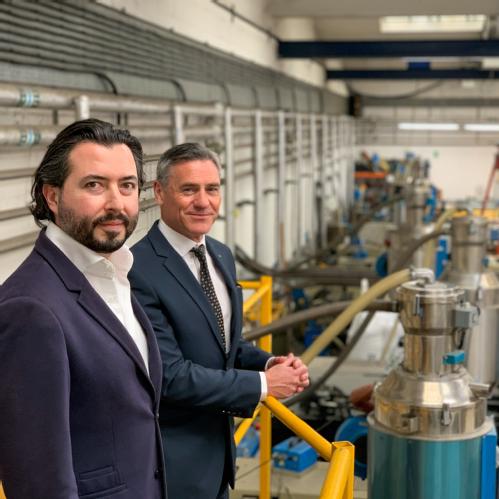
Impact
- Although the changes we made to the original Biomarble design were relatively small, they have had a big impact on cost, material usage and waste.
- The optimised Biomarble design saved 0.39g of plastic material per product, approximately 10% of the overall product weight.
- This translates to a 6% cost reduction in its manufacture. Based on last year’s sales, this equates to a saving of £ 42,000 per annum.
- The new product is a new design and yet to go on the market. We are assisting Warden in improving the basic design and manufacturing process to maximise potential profits. In order for the new product to make it to the market, it must be lightweight and have high machine output “yield”. WMG is assisting Warden to achieve these goals. WMG has already helped reduce the raw material content by 18%, which will help ensure its commercial viability.
- This saving enabled Warden to invest in new tooling for the Biomarble to keep ahead of demand for this product both for the home market and for export.
Mark Barrett, Managing Director at Warden Plastics, commented: “We’re always looking to make efficiencies and reduce waste to make our business more sustainable. The simulations Fernando created allowed us to see how we could reduce the quantity of material but keep the product effectiveness, so that we could make decisions prior to investing in new tooling. We hope to launch the new iteration of the Biomarble later this year.”
Dr Fernando Murguia added: “This is the kind of product that will enable an environmentally conscious future and, from our perspective, it was of the utmost importance to run a number of simulations to optimise the use of materials and ensure we were keeping the product effectiveness. Warden is a really dynamic team, and it was great to be able to help them become more sustainable and efficient.”
Intern duo bolster collaborative relationship with creation of new product line and costing system
Challenge
With manufacturing centres in the UK and in Dubai, Ramfoam makes foam products for a range of applications. Although already selling into a large range of industries including aerospace, construction and retail, the company had significant growth aspirations and wanted to diversify into new markets, specifically the oil and gas sector.
Alongside this, the company had a requirement to optimise their cost model to reduce the time and resource needed to create quotes for more complex (tertiary) products. They believed that a large amount of tertiary work was being taken to competitors because of the issues with their existing quotation system. When quoting for tertiary products, many manufacturing and resource costs need to be factored in due to their complexity.
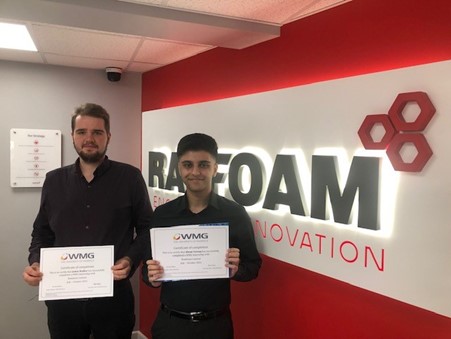
Solution
At the height of the COVID-19 pandemic, Ramfoam had worked with WMG to adapt its manufacturing practices to produce two million face visors a week. They discussed their new ideas with innovation manager Richard Brighton and it was suggested that WMG's internship programme could help them take the projects forward. Ramfoam recruited Ahsan Farooq, an engineering design student at the University of Bristol to work on developing some new products for the oil and gas sector and James Walker, a systems engineering student at the University of Warwick to work on the costing model.
Under guidance from Ramfoam, Ahsan identified three product lines (packer elements, essential products used in gas and oil wells) that could be produced in high volume and had the potential to deliver good margins. He then spent time researching the material requirements, the design features, factoring in how to reduce product failure by simulating conditions, as well as other testing criteria.
James worked to identify areas of improvement to speed up the generation of quotes. He mapped out the current processes and the man hours required to calculate quotes and developed an automated system that could retrieve information quickly and easily. He then went on to integrate it into Ramfoam’s new ERP system along with a quote tracker to monitor how may quotes are coming in and the actual win rate.
Impact
- James’s new system means that 90% of tertiary quotes can now be generated within 24 hours.
- Win rates following quotations have increased from 25% to 50%, and new revenue generated through additional tertiary work is forecast to be £1 million next year
- The introduction of the new product lines will increase turnover by £1-2 million
- As a result of the new product lines, Ramfoam are formulating plans for setting up a specialist group for the oil and gas industry
Tim Mulqueen, Director at Ramfoam commented: “It has been valuable to us to have someone look at some of the priority challenges in our business. James was very diligent and his recommendations will be key in allowing us to win new business. Ahsan’s passion for his job was refreshing to the team. In just 12 weeks he was able to deliver on the project objectives, supporting the growth and market diversification of our company”.
James Walker, WMG Intern added: “The fact that the internship was based on a well-structured project made the difference for me. I could see from the description the benefit that it would have on the company and how much I could learn over the 12 weeks. One of the main benefits for me was the opportunity to improve the way I communicate and collaborate with people in a team, which is a valuable skill in today’s work environment”.
Ahsan Farooq, the second WMG intern, echoes James’ comments: “I was looking for an experience that would allow me to be useful to the company from day 1 and this internship was what I was hoping for. I was able to do independent research and design a new product that worked! An amazing feeling! The experience boosted my confidence, as I feel I am now able to lead on a project and better communicate the value of what I’m doing to clients and stakeholders”.

For more information on working with us, or the WMG Internship Programme, please email wmgsme@warwick.ac.uk
Woodwork company nails success with more than £70k yearly savings with WMG
Background
Gordon Ellis & Co is a UK manufacturer of precision woodworking and rotational moulding. With more than 150 years of experience, the company has moved from horse and hand tools to today’s CNC precision woodworking machinery. Products include hospital bed frames, commodes, trolleys, high end audio equipment casings, and automotive wooden internal components. Their rota moulding products have a wide range of durable and weather resistant applications.
Challenge
Gordon Ellis & Co has been making quality wooden and rotational moulded products for many years. Although they’ve progressed massively from manual manufacturing practices to industrial machinery, they are now interested in stepping into the digital age.
Having met the WMG SME Group at a networking event, they were interested in getting their perspective for moving forward and building better. This would mean investigating a way of analysing the factory to discover how ‘digital manufacturing’ can create improvements. They hoped this would help them to make more products faster to meet their increasing customer demand.
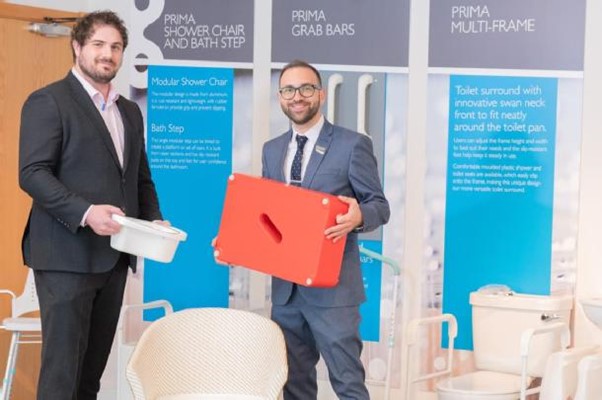
Solution
Digital manufacturing is often a thrown around buzz-phrase, but at WMG we aim to promote and explain just how much digital manufacturing can improve efficiency, productivity, and data collection. First things first, we wanted to make sure Gordon Ellis’s factory was prepared for the transition.
Rich Savidge, Technology Transfer Engineer at WMG, and Onur Eren, Innovation Manager, undertook a detailed investigation of the key facilities ‘current-state’, reviewing existing equipment, productivity, efficiency, and data outputs. Working with Gordon Ellis & Co, the team were able to propose a ‘future-state’, recognising equipment suitable for upgrade, targeting challenge areas and developing the businesses core capabilities.
The core impacts of the project saw reduced costs by eliminating material waste and promoting operational excellence methodologies. The team also recognised ways to introduce useful methods to gather data from their factory.
During this preliminary optimisation project, it was clear that digitisation would have a major improvement to Gordon Ellis & Co’s turnover while increasing their capability to stay competitive and enter luxury markets. The team worked hard to submit a Knowledge Transfer Partnership (KTP) bid that will gain them the funding they’d need to complete a two-year project to source an associate engineer to implement sensors and data collection devices around the factory. The beauty of a KTP is that it works in partnership with the externally employed graduate (the associate), and WMG utilising the facilities, expertise, and resources to see the project through to the end.
Impact
- The preliminary project ‘quick-wins’ saved the company £70k a year through waste elimination and the streamlining of internal procedures.
- More substantial gains will be had after the installation of state-of-the-art CNC equipment yielding an estimated gain in production capacity of x 4, de-risked by the team’s involvement.
- The Innovate UK KTP bid funding was successful and the project aims to increase the turnover of Gordon Ellis & Co by £540k over the next five years.
- Their savings will allow them to invest in the newly defined strategy, targeting industry 4.0 technologies that will enable sustainable growth
Rich Savidge, Technology Transfer Engineer, WMG, commented; “Working together, we were able to objectively define bottlenecks and target real production waste, preparing a journey for Gordon Ellis and their digitalisation journey. I am very pleased that they have won their KTP bid, and I can’t wait to see what they achieve in the next five years.”
Onur Eren, Innovation Manager, WMG, said: “I really enjoy projects like these because the team at Gordon Ellis were so open to our suggestions and were passionate about taking on the latest innovations before others in industry. I’m looking forward to supporting the digitalisation KTP over the next two years and beyond.”
Daniel Robinson, Financial Controller & Company Secretary, Gordon Ellis, added; “We’ve spent over 150 years in the industry, and we know it well, however, we are also looking to the future and seeing that we need to become more digital to continue to be innovative and competitive. WMG know digital and smart factories so well and we got support for the KTP that I wouldn’t have got anywhere else.”
